
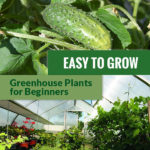

Did you just purchase a greenhouse and want to start with greenhouse gardening? Congratulations! It’s a great choice! The start can sometimes be a little overwhelming so we made a list of easy to grow greenhouse plants for beginners.
A greenhouse is a magnificent treasure to any crop. It lets gardeners make the most of the sun, extending the seasons, and yield a wide range of high-grade crops. With the help of your greenhouse, you can sustain a very fruitful harvest at any time of the year. Proper planning plays a very important role. Check the space, the soil, the temperature, and water sources.
There may be a few obstacles but with the right solution, everything can be mastered as you go along. Starting with easy to grow greenhouse plants will give you excitement and pleasure as you see them thrive. You will then find yourself leveling up and excited to grow some challenging plants.
Why do plants grow better in a greenhouse?
A greenhouse is practically possible for a lot of yards. Many prefer these indoor settings because of their controlled environment. For example, the automatic timer connected to the watering system. It allows you to save time and control the environment depending on the season or time of the day.
Automatic ventilation controls the indoor airflow. It gives your greenhouse plants with a consistent supply of carbon dioxide. They require this for sugar and oxygen production. The concentrated carbon dioxide will result in bigger leaves and vigorous plant stems. It also increases its potential for early flowering and fruiting.
Greenhouses with moisture regulators keep the air humid for peak plant development. With a humid atmosphere, every plant can focus on flowering and fruiting. Plus a moist soil will be less likely to entertain pests and diseases.
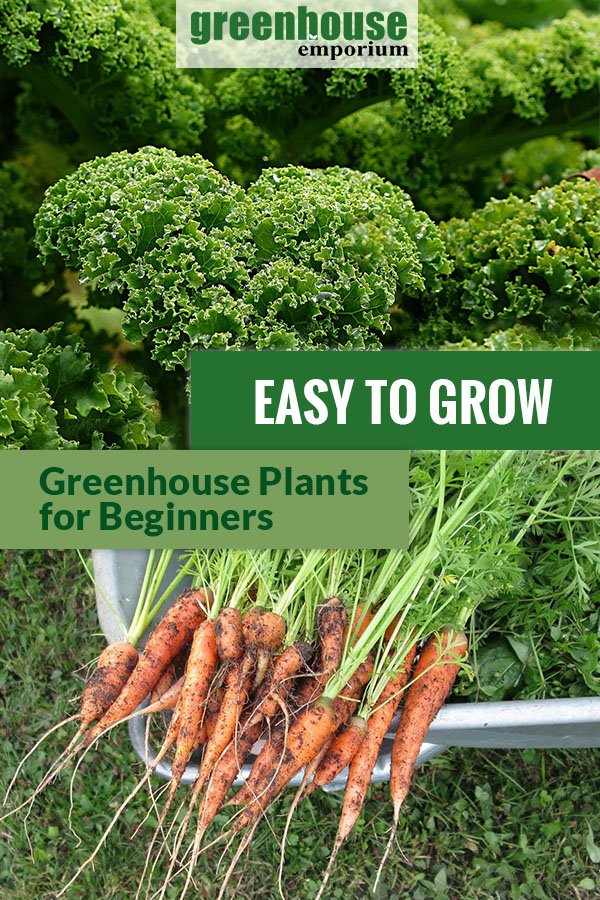
Basics that can still influence plant growth even in a greenhouse
There are a few things to know that still can influence the growth of your plants. Some of them you probably know already from outside gardening.
Seeds
Planting using old seeds is possible. Although you may be wondering the odds of germinating them. Let us have a look at these three important elements that can affect your seeds’ viability.
Age
All seeds are viable for at least one year and some are for two years. However, the germination percentages for out-of-date seeds will begin to drop after their first year.
Type
The variety of seeds can influence how long your seed stays alive. Seeds like corn and peppers will have a tough chance of surviving if they passed the two-year mark. Seeds like carrots and tomatoes can stay viable for as long as four years. While seeds like cucumber and lettuce are good for up to six years.
Storage
Old packets can have a greater possibility of keeping the seeds viable if stored properly. Seeds will stay alive much longer if they are stored in a cool, dark room. Your vegetable drawer in the fridge is a smart option for storage.
Water
Overwatering or underwatering are usual causes of why seedlings have a delay in growth. It is normally followed by drooping or wilting. Some plants naturally absorb more than others. The quantity of water that is enough for a plant may be too generous for the other plant. When a seedling is developing slowly, observe your watering closely.
For greenhouse beginners, it might be tricky at first to find the right watering frequency. It stays moist for longer than in a garden but you also cannot rely on rain anymore. You can also organize your greenhouse plants according to their water needs in order to keep an overview.
pH level
A too high or too low pH level in the soil is the most basic reason that gardeners may overlook. It can slow down germination even if you do not see any visible signs. If you haven’t been monitoring the pH, do it soon to see if that is the potential root cause of your difficulty! It is likely that the pH level at the roots is not fair for some of your plants. This is likely to happen even though they are in the same environment.
Don’t have a soil testing kit yet?
We recommend the SONKIR soil pH tester. It’s a reasonably priced option that provides pH level, moisture, and light.
Easy to grow greenhouse vegetables
Vegetables are everyone’s favorite to grow. Having your own organic veggie supply year-round is the greatest and greenhouses can be part of this healthy life.
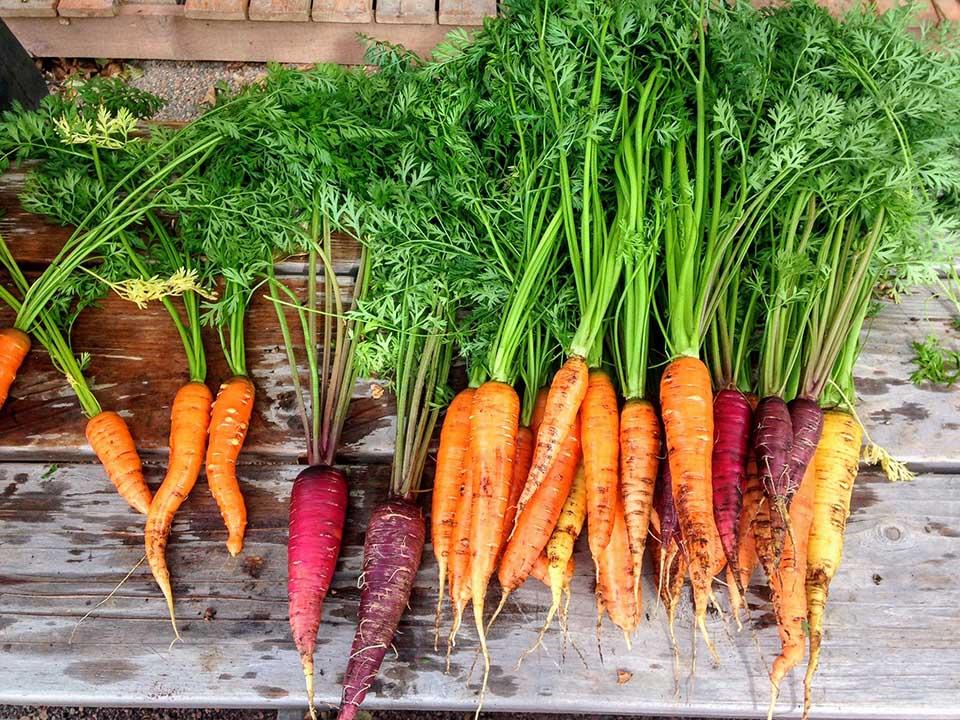
Carrots
Carrots are one of the most popular root crops that are so easy to plant. Plant them anytime even in the winter. No worries because it can tolerate frost. If you are worried about some challenges in growing carrots, then worry no more. Just prepare a loose, sandy, deeply-tilled, and loose soil. This will let them dive without pressure. Make sure that it is not too thick. Or you will end up with dwarfed, rounded carrots!
Sadly, no chemicals have been registered yet for the management of well-known carrot pests and diseases. The good news is that most of them are already resistant to most pests and diseases. Check the packets meticulously. Sow disease-free seeds only. Regular working of the soil can overcome these obstacles. It is also okay to harvest earlier than expected. This can be done only when the damage happens late in maturity. Practice three-year crop rotation with non-susceptible plants. Always discard and destroy infected residue.
Carrots can take any time from 2 to 4 months to ripen. It depends on the type and growing circumstances. Some varieties may require a few more weeks. They are normally ready in about 75 days. Pulling may oftentimes end with a handful of leaves. But unfortunately, no carrots are attached. Loosen the soil first with a garden fork before reaping carrots.
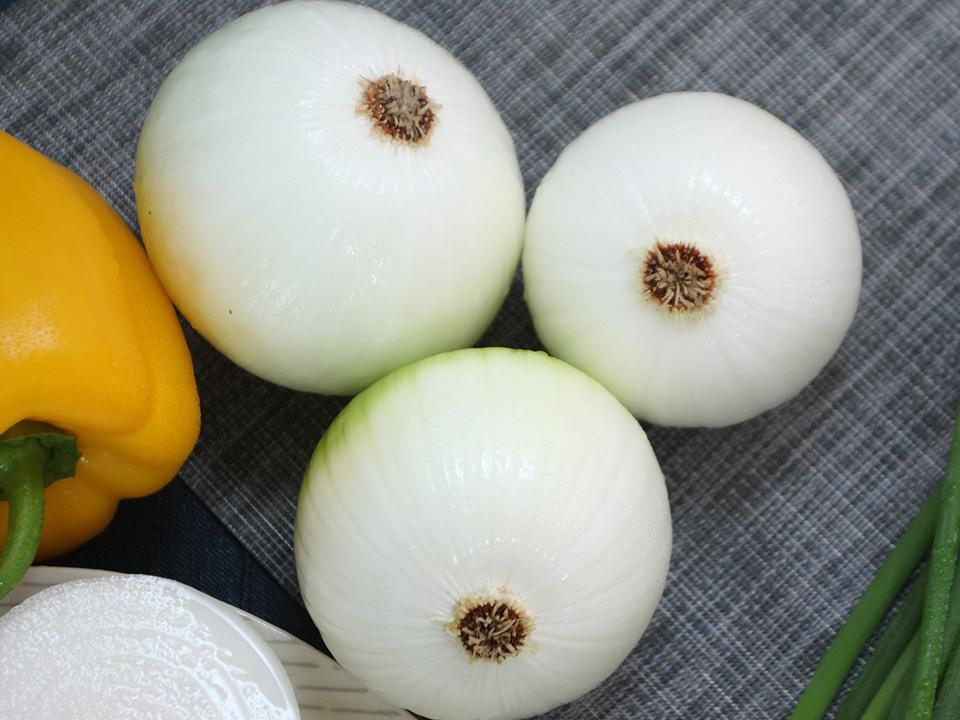
Green onions
Green onions develop fast in a cold, coastal climate or a climate-controlled greenhouse. They are some of the simplest crops to produce and are practically maintenance-free. Onions are one of the most recommended starter plants. Perfect for amateur greenhouse gardeners. You can start the seedlings inside and then transplant them outdoors.
It can be planted either from seeds or sets. The easiest way is to start by developing them from sets. Onion sets are helpful as they thrive abundantly in every condition, even for cold greenhouses.
Just plant the bulbs in well-drained soil. Water the onions regularly once they are set in your greenhouse. Do this especially when the weather is so hot. The best time to cease watering the plants is when they have swollen up. When the foliage becomes yellowish and dies back, you can now uproot it. Next is to dry them in the sun. What could be simpler than that?
They are tougher against pests and diseases. Sanitize your flats and containers with a 10% bleach solution before adding the soil, It will lessen the probability of disease.
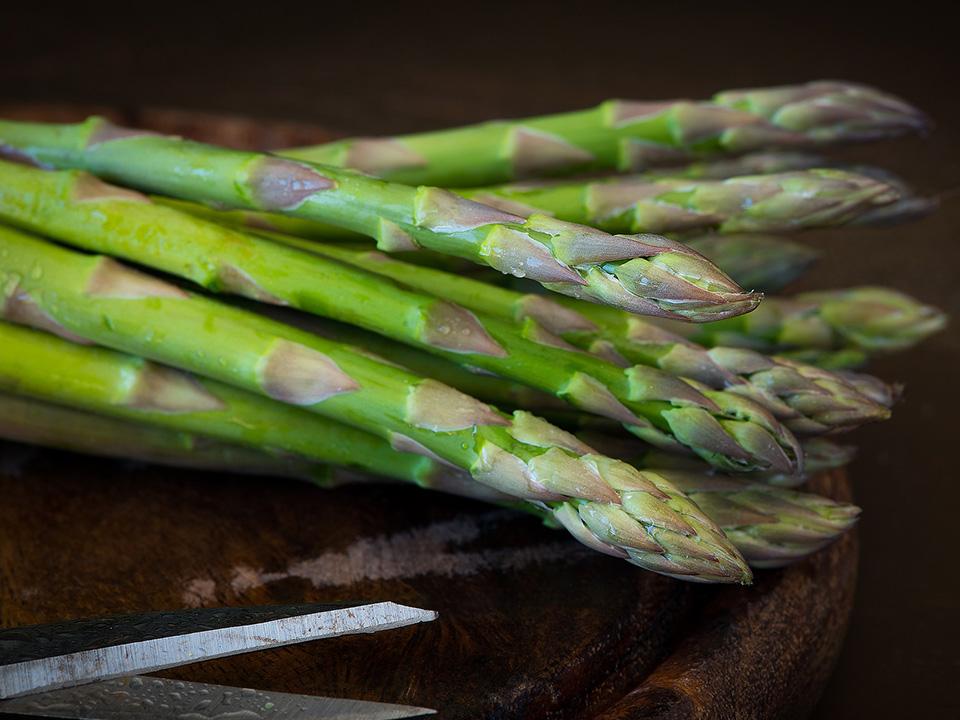
Asparagus
Are you looking for veggies that will produce for 20 years? Garden asparagus is the answer to that. It is best planted from a one or two-year-old crown. Twenty asparagus crowns can produce sufficient supply for a household of four.
Asparagus hates competition. It is crucial to remove all the weeds and grasses around its surroundings. Never plant other crops in the same area.
The usual method of planting asparagus is in a trench. It should be about 12 to 14 inches under. Supplement the soil with lots of organic matter dug within the trench. Set the crowns 12 inches individually, with the shoots aiming up. You do not need to pick everything. If you chopped everything, the crown may die. Make sure to leave some spears preferably the smallest ones.
You can also grow your asparagus in deep containers if you want.
Don’t get too excited about your first harvest. Do not pick too much from it for the first few years. They need to develop a stable root system and energy that they will require. This will provide a generous crop of spears the next season.
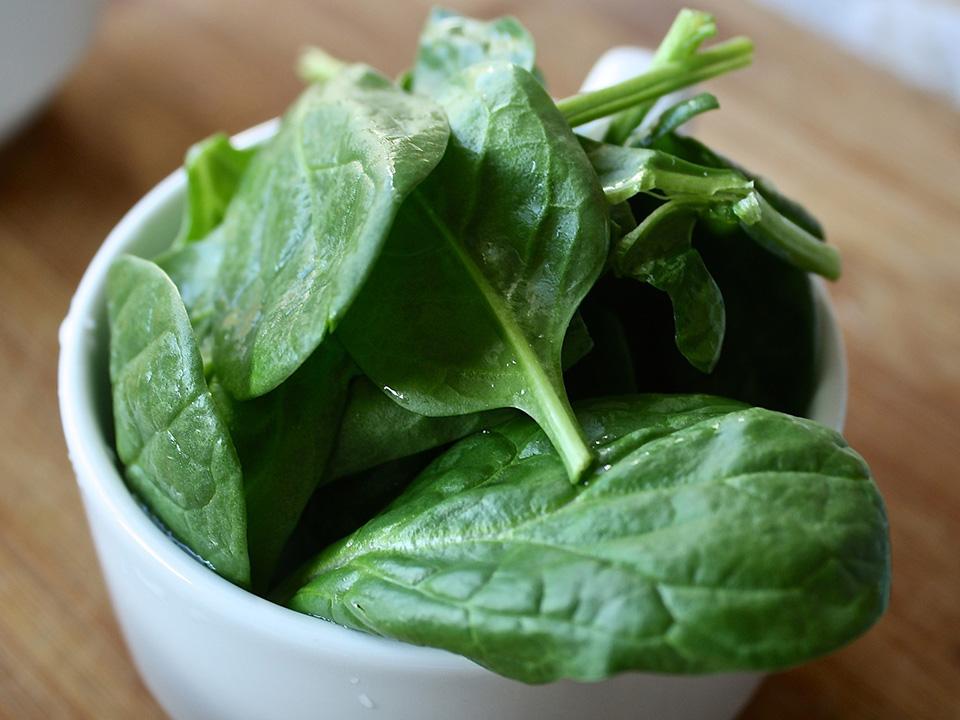
Spinach
Spinach is a cold and hardy leafy vegetable. It is a common product that can be grown all year round. Most spinach thrives in cool weather. Pests are normally not a challenge, especially for a newbie.
They have comparable growing conditions as lettuce, but they are more nutritious. It can be eaten fresh or cooked. It has higher iron, calcium, and vitamin content than other raised veggies. It is even one of the excellent sources of vitamins.
Spinach loves full sun to light shade with well-drained soil. Prepare your soil with aged manure approximately one week before planting. The soil temperature should not increase more than 70ºF. The seedlings are hard to transplant. This is the reason why starting it indoors is not advised. Feed them only if needed. When seedlings germinate to a couple of inches, thin them from three to four inches apart. Keep the soil moistened with mulch.
You can already harvest the leaves just as soon as they are mature enough to eat. Remove only the outer leaves. Let the core leaves to become bigger. This will let the plant to continue growing. This technique will also temporarily delay bolting.
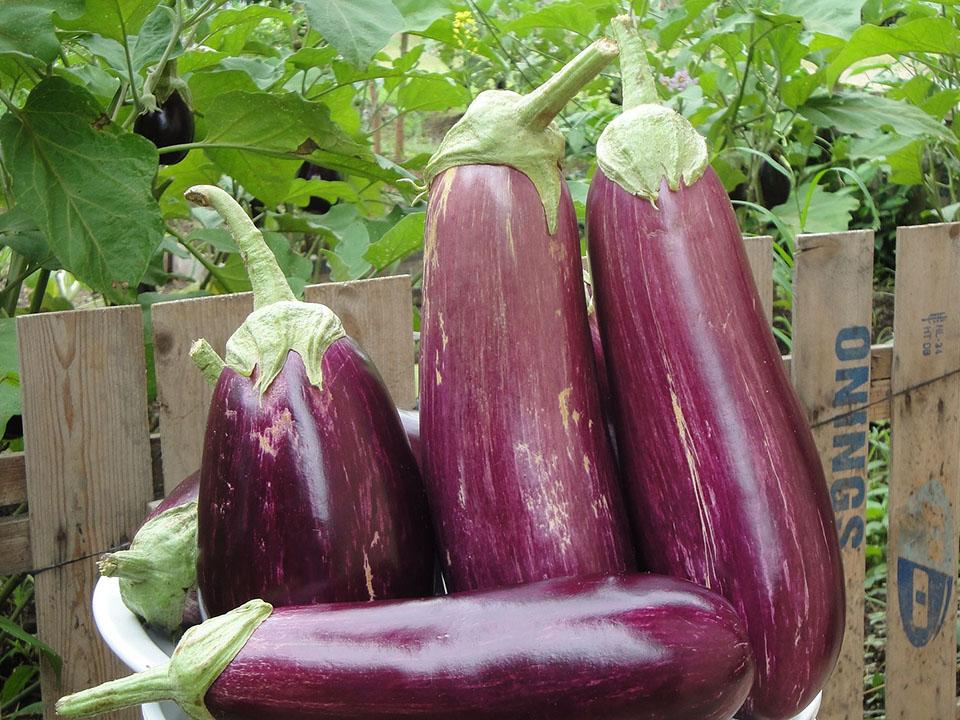
Eggplants
Eggplants are also known as aubergine. These warm-weather greens need relatively warm conditions, like peppers and tomatoes. Raised beds enhanced with composted manure are an excellent thriving site for eggplants. The beds will warm the soil immediately.
Eggplant may tend to fall over once packed with ripe fruits. Make sure to stake them for about 24in tall. You may also use a cage to hold them upright. Check out some planters and raised beds with trellis.
Apply the finest potting mix to prevent diseases. Water them well after planting. Add a coat of mulch to maintain moisture and defeat annoying weeds. Remove the terminal buds for a thicker bush. This veggie is also excellent for pots and makes attractive decorative borders.
16 to 24 weeks after sowing is the perfect time to harvest when the skin is bright and unwrinkled. Don’t pull the eggplant. Cut the fruit near the stem, leaving approximately an inch of it still attached.
Read more about growing eggplants in a greenhouse here!
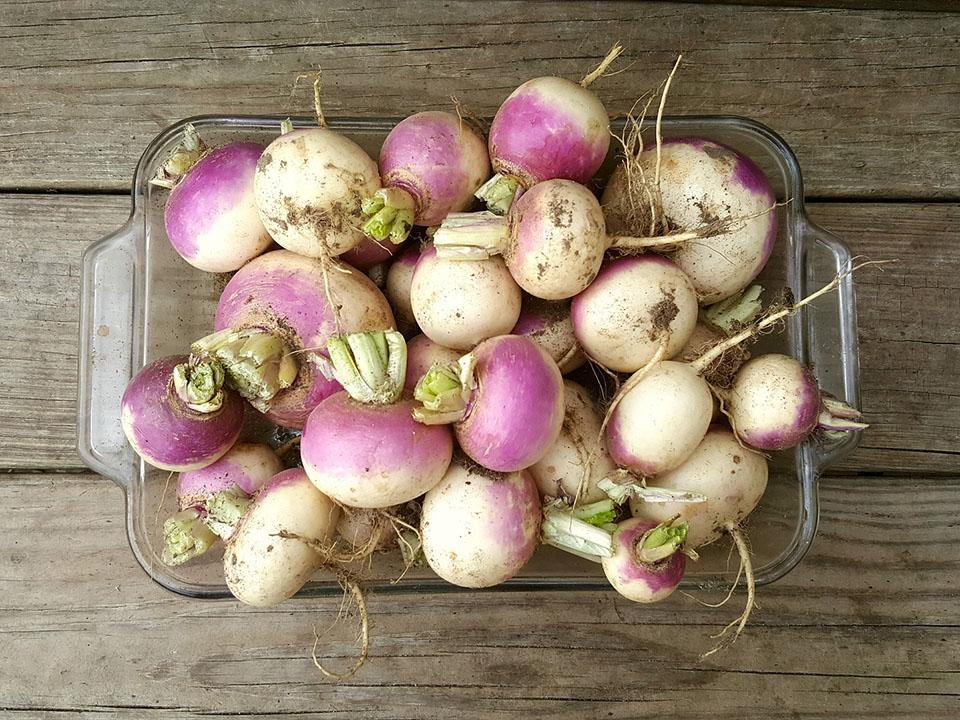
Turnips
Turnips are cool-weather greens that belong to the mustard family. They grow quite fast. You can savor both the roots and the greens. Another amazing fact about this vegetable is that they sprout in just a few days. This root crop is very nutritious and adaptable to most areas.
Prepare a mixture of compost before sowing. Turnip seeds are scattered right into the soil. They do not transplant well. Make sure to prepare a permanent sunny spot for them. They do not require much attention. However, regular soil moisture is necessary.
To help overcome diseases, never plant turnips in the same spot. Practice crop rotation. Floating row covers will also shield your vegetables from pests. Since they mature quickly and get picked right away, infestations are not usually a difficulty in greenhouses. In the event you detect a problem, it is already time to harvest.
Within a month, you can already appreciate their fresh greens. The swelled roots can be harvested in the following month. Young turnips are so fragile. You can just peel and consume them just as you would an apple.
Read more about growing turnips in a greenhouse here!
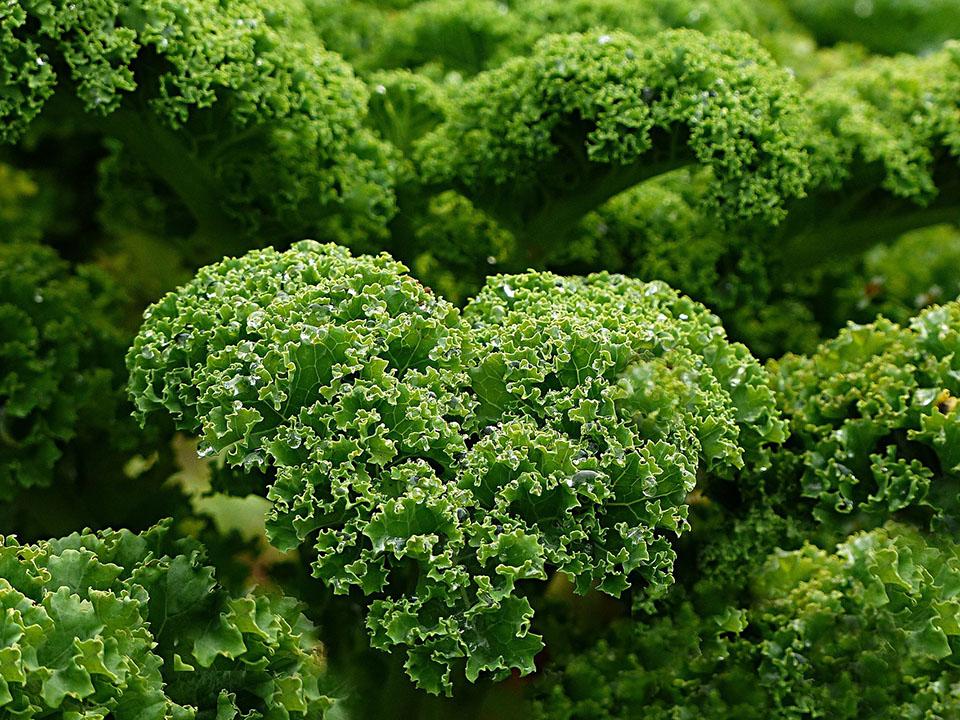
Kale
Kale is so nutritious with the highest antioxidant properties. It is an effective anti-inflammatory. It is best to use seeding trays for sowing. You’ll be surprised that it is way easier than developing in a seedbed.
Practically no attention is needed because kale is one of the toughest and most disease resistant of all greens. Keep the weeds away with routine hoeing. Eliminate yellowing leaves which will emerge around the base of the plant.
They will thrive in nearly all situations, even with partial shade and sandy soils. Adequate sunlight is enough. But then again they will develop properly in part shade.
Kale is ideal for continuous cutting. It keeps on providing fresh leaves for months. Pick the ground leaves first. The tip will continue to develop and produce fresh leaves.

Zucchini
Zucchinis are a healthy vegetable to start with especially for beginners. They are one of the simplest vegetables to grow. They typically generate a bountiful harvest in three to four weeks.
They love to spread out. You can also set them in large containers or growing bags if you have insufficient space. Remember that some seeds may fail if you buy a packet. It is best to plant all of them. If not, the seeds will not germinate well for another year.
If you are planning to plant several zucchinis, place them roughly two feet apart. They demand a lot of space to expand. It is better to stake them up so that they won’t hang in an uncomfortable position. Water them adequately. Keep an eye out for some slugs.
Take good care of them as they thrive in your greenhouse. Healthy plants should start to shoot up quickly. You may want to move them into a larger container. Make sure to provide them the space they require.

Microgreens
Microgreens are also known as the vegetable confetti. They are times that they are mistaken with sprouts. They are a combination of edible young greens.
You can easily grow microgreens in a greenhouse or a cold frame. They love the full sun. They cannot tolerate freezing temperatures. Make sure that your greenhouse or cold frame has a little moisture and excellent ventilation. You can use heaters or heating pads to protect them from frost.
Each set of seeds in seed trays should be sufficient. This will make them grow in dense and hold each other. It’s okay to water them from above at first to soak the soil. Bottom watering is advisable when they start to sprout. Check the absorption of water. This will also limit the growth of diseases and gray mold.
Use scissors when harvesting. You can already enjoy them in less than a month when they reach up to two inches high. The stems, seed leaves, and the first set of true leaves are all safe to eat.
Read more about growing microgreens in a greenhouse here!
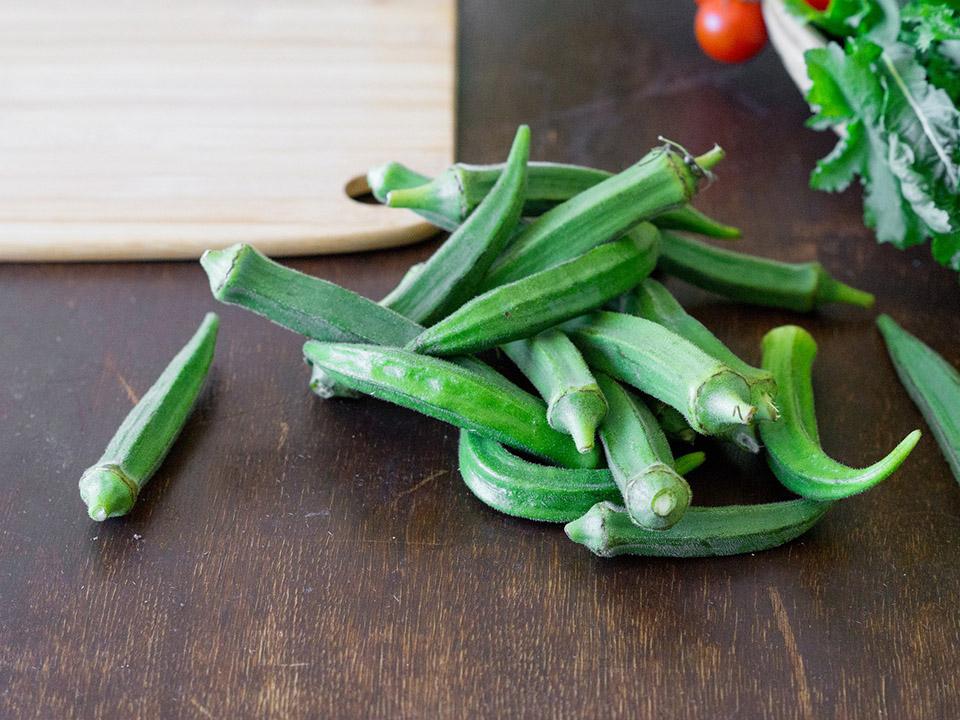
Okra
Okra is also known as ladyfingers. It is best grown in a greenhouse. They can also thrive in containers on a shady patio but they will need more watering. You can choose Clemson’s spineless variety for a long cropping period.
Drench the seeds for two hours in warm water before sowing. When the seedlings are big enough you can already transplant them into pots. Tweak those developing tips to promote bushiness. Fertilize them every week with high potassium compost when you notice the first blossoms.
The pods can be picked while they are immature because matured pods of common types are hard and stringy. Wear protective gloves when harvesting. This will prevent irritation from its tiny hairs.
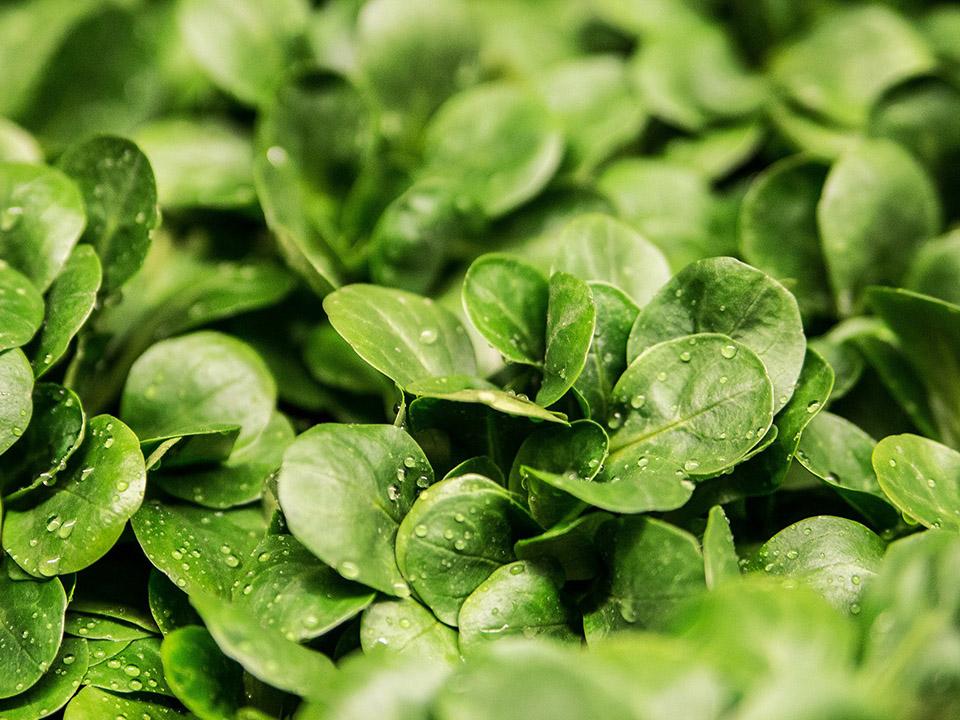
Salad greens
It is surprisingly easy to grow organic salads (lettuce, beet leaf, romaine, and more) every day of the year. If you plan to harvest salad greens all year round, you must plan on ordering at least eight or ten different seeds. Start with types that flourish in cool soil and moderately low light requirements. And as summer arrives, sow for heat-tolerant varieties.
Sow at least two seeds each week. Once they already have their first set of true leaves, you can transfer them to their own cells. Let them grow for another couple of weeks before transplanting them to your garden.
Your salad greens will grow after cutting them. Just leave about a half-inch of the plant behind. You can pick the leaves or the entire head. Lettuce may be cut off with scissors.
Read this to get more details about growing salad greens all year.
Easy to grow greenhouse fruits
The extra warmth of a greenhouse lets you grow your favorite fruits all year round. Set your goals, wait for the satisfying results, and enjoy your gardening experience.
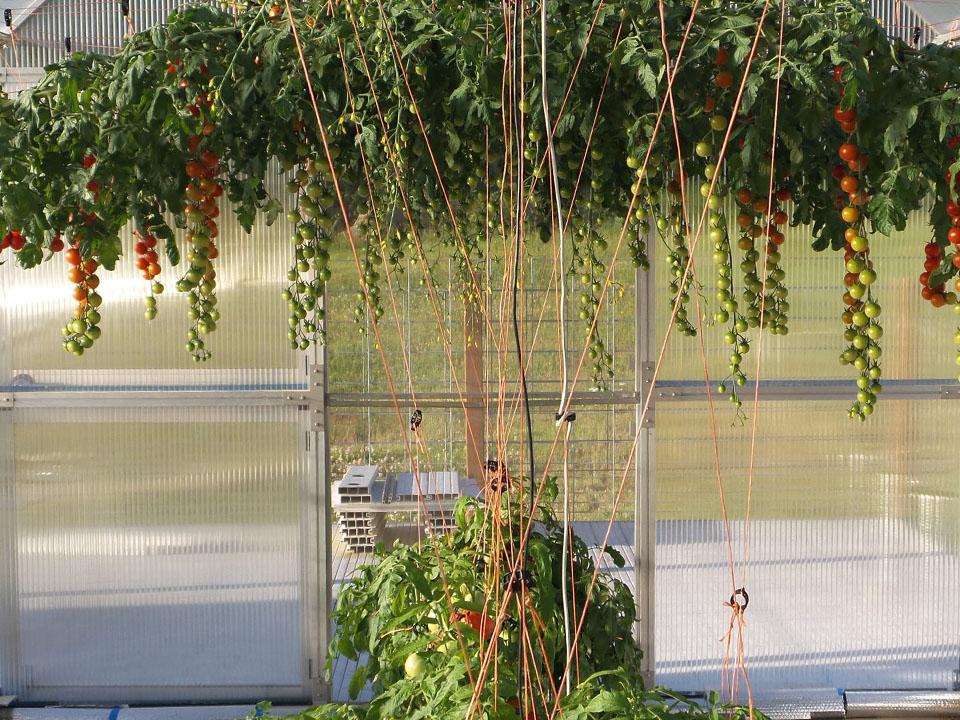
Tomatoes
It is easy to plant tomatoes outdoors and even easier in a greenhouse! Nothing beats a year-round supply of organic tomatoes. For starters, choose a variety that is immune to diseases like fusarium and verticillium.
Tomatoes are heat-loving plants that cannot stand the freezing weather. Inadequate light can lead to pale and frail plants. There are a lot of varieties to choose from. Choosing the best variety can be a tough task. Decide on the type of tomatoes you want. Consider the size of the full-grown tomatoes depending on your planned garden.
Make sure to plant your seeds in a soil that has proper drainage. The soil should be moistened but not immersed in water. The best temperature is around 70°F to 75°F. Place one seedling per pot for a strong and healthy tomato plant. Do not hesitate to thin the plant, because it has to be done. Start fertilizing once you see the second set of true leaves.
Organic tomatoes are healthier with greater levels of Lycopene. Lycopene helps to unclog obstructed arteries. It is also good for the heart. Another reward with growing your own tomatoes is the astounding diversity of size, shape, color, and flavor.

Strawberries
Strawberry is one of the most common greenhouse fruits in the country. Greenhouse-grown strawberries taste better than those bought from a supermarket. Planting them inside a greenhouse also lessen pest and disease damage. You may also want to bring bumblebees into your greenhouse for better pollination. You can also use VegiBee garden rechargeable pollinator. Make sure to buy disease-free seedlings from reliable nursery stores. Growing strawberries doesn’t have to involve so many activities. Just make sure to follow the easy steps on growing it.
Plant strawberries in pots packed with soil high in organic material. They need well-draining soil. Mulch to control the soil temperature. Drip irrigation is necessary because they have shallow roots. Sprinkling them from above may result from pests and diseases.
Make sure to keep a healthy and clean greenhouse all the time. Be alert for any indications of pests and diseases to prevent difficulties from worsening. Strawberries are also prone to verticillium wilt. You can stop this from happening by buying varieties in accredited stores. Put them away from other plants especially tomatoes.
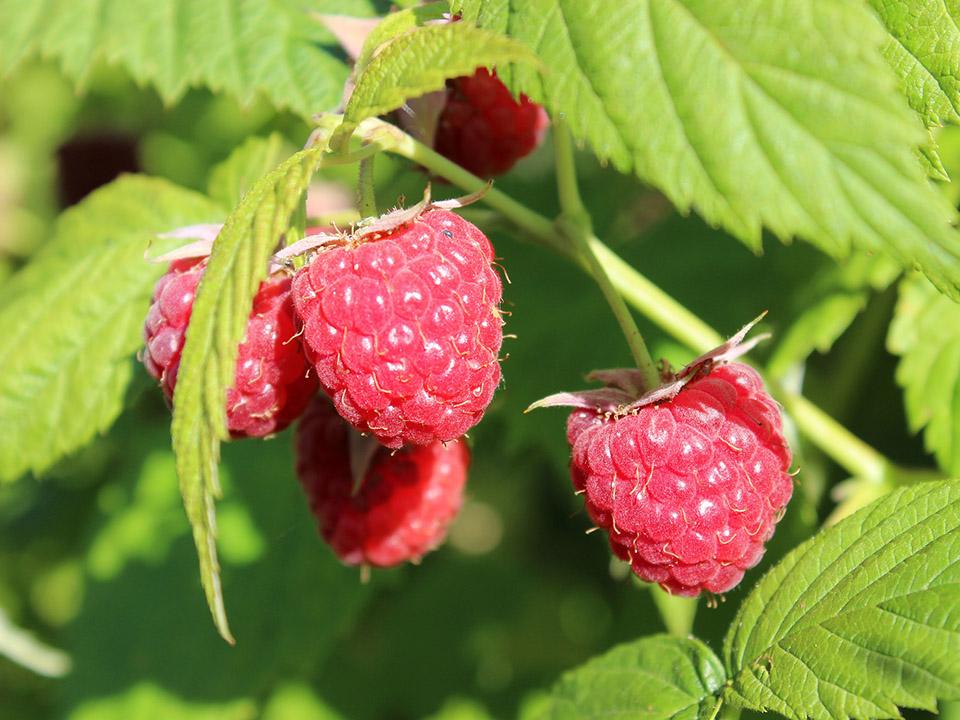
Raspberries
Raspberries can be grown in a greenhouse at any time of the year. They are easy to grow and can produce fruit regularly. Primocane bears flowers and fruits in the same year. They are capable of fruiting in their very first year of maturity. Floricanes have stems that develop for a year before producing fruit and flowers. They are usually the summer fruiting types.
They don’t need additional lights and they develop properly in nearly cool conditions. A greenhouse temperature of 70°F is excellent for growth. Buy raspberry canes from a reliable garden supplier. Install a drip irrigation system for potted raspberries because overhead watering can cause rot.
The harvest season lasts between 8 and 10 weeks. Don’t keep them for long. You may try freezing some for later use. Scatter them on a tray and place them in the freezer. Transfer them into freezer bags once frozen.

Cucumbers
Is the cucumber a fruit or a vegetable? It is a little bit tricky, right? But based on science, it is a fruit.
Planting cucumbers can be a bumper crop in your greenhouse. Be sure you propagate cucumbers in peat pots, not in flats. Their cucurbit root systems must not be obstructed.
There are a couple of ways for training vines when raising in a greenhouse. First is the triple stem training method. All suckers are taken off the developing creeper up to the head of the trellis. The other approach is the lateral growth training. Each sucker is pinched off for the first 4 to 5 fruit sets.
A few pests and diseases might risk your cucumbers’ growth. The spider mites are microscopic. You will see them webbing the stem and leaf. Insecticidal soap can help reduce their populations.
Cucumbers grow fast. Never let them become too big because it will taste bitter. Harvest every two days. Keep picking. Because they will stop producing as they mature.
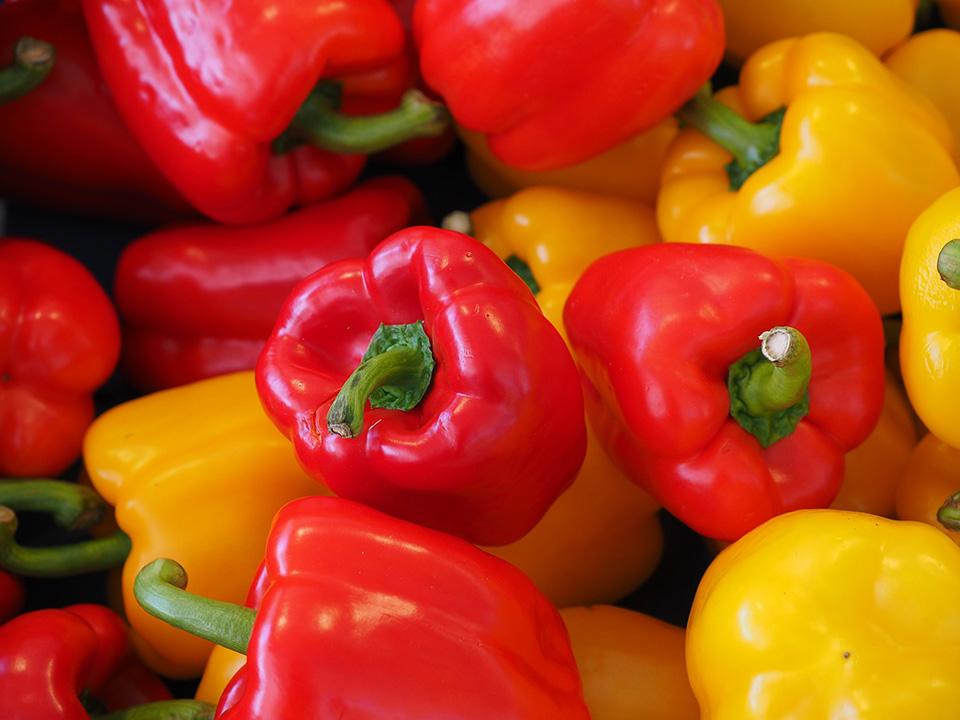
Peppers
Have fun gardening with easy to grow pepper varieties. Peppers are colorful plants. The variety of shapes and sizes is one of the best aspects of your greenhouse. The distinct flavors varying from light and sweet to eye-watering spicy. It is something to satisfy everyone‘s taste among different varieties ready from seeds.
Peppers need a fairly long growing period to give the best results of sweetness or spiciness. Pack your seed tray and water the soil with fertilizer before scattering your seeds on its surface. Once they are well-established, the roots will begin to stretch in the cells. This is the right time to transplant them into pots. They don’t expect pinching or training. When they start to flower, the stems will manage to branch out naturally.
Always watch for colonies of aphids on leaves. They suck the sap and secrete sticky honeydew. This will promote the increase of black molds. Use your fingers to squish these colonies or apply biological control. Dark spots may develop on the ends. Water regularly and not intermittently. Do not let your soil dry out.
Harvest peppers as soon as they reach the right size. Fully grown peppers are the most nutritious and tastiest. Picking them regularly will stimulate more fruits. It is better to use a sharp knife or scissors so that they won’t be easily damaged when cutting it.
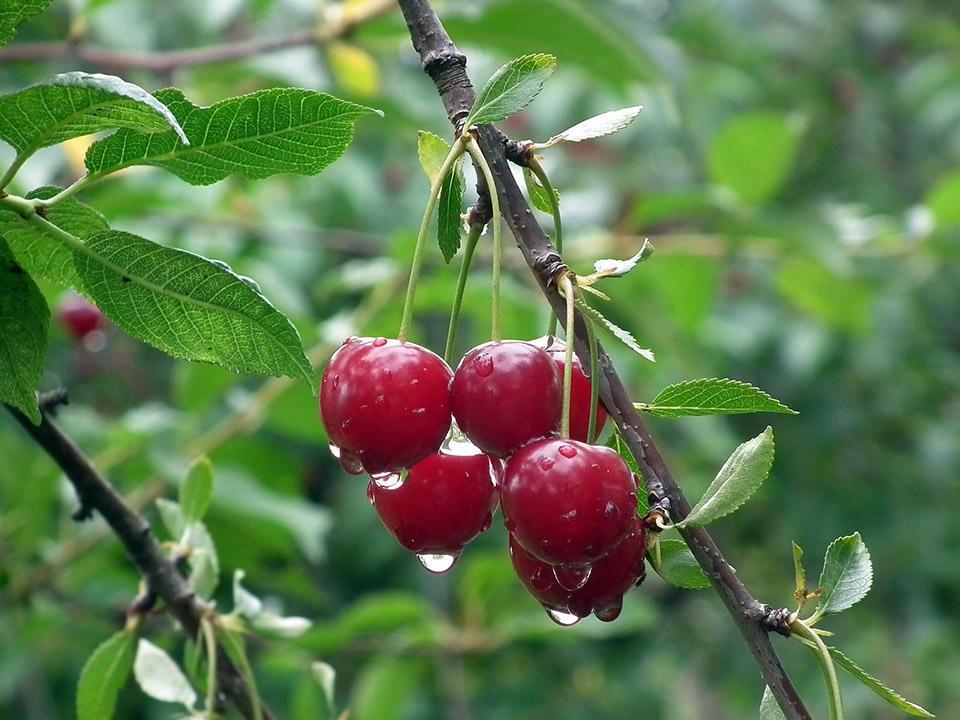
Cherries
Cherries are one of those fruits that can be planted in a greenhouse. Potted cherries take up smaller greenhouse place and are movable. Cherry species that do not need cross-pollination are one of the easiest to grow.
They would fruit as they would outdoors with the right combination of soil, temperature, water, and nutrients. Fertilize your cherry trees once a year. Be sure your greenhouse is well ventilated. Keep the temperature from rising quickly especially in summer. Prune it lightly using scissors. Remove every broken or dead branch. Prevent diseases by implementing good airflow, pruning, and thorough cleaning. Do not leave the leaves or aged fruits on the ground.
We know that you are excited to harvest your cherries but you need a lot of patience. Harvesting them too soon may result in ruining your fruit. It will take up to 3 years to produce proper fruits.
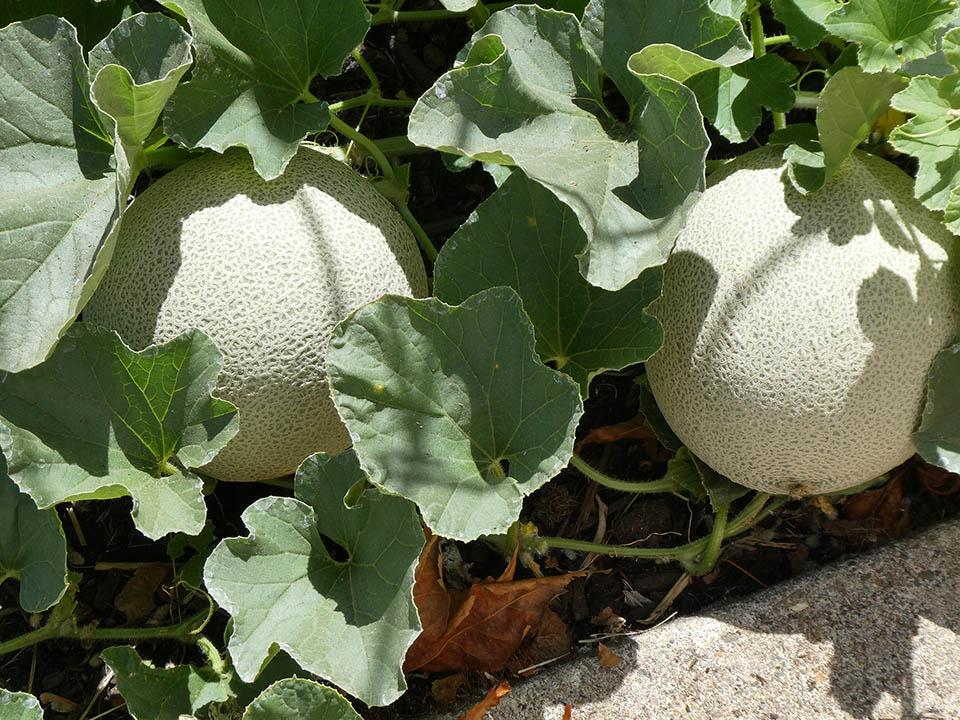
Cantaloupe
Growing cantaloupe or muskmelon in a greenhouse is so satisfying. The answer is lots of moisture, sunshine, and warmth. If you have a small space, its vines can be trained using a trellis. They love loamy and well-drained soil. They also need pollination to produce fruit. Bees can help!
Thinning lessens the competition for space, nutrients, and water, to provide healthy growth. Companion planting is one of your best defense from pests. Try planting dill to ward off these bugs. Inspect your vines at least twice a week.
A crack in the stem where the fruit is attached is a sign that your melon is already ripe. This sun-ripened fruit is packed with antioxidants and vitamin C into every bite. It perfectly blends great flavor with great nourishment.
Read more about growing cantaloupe in a greenhouse here!
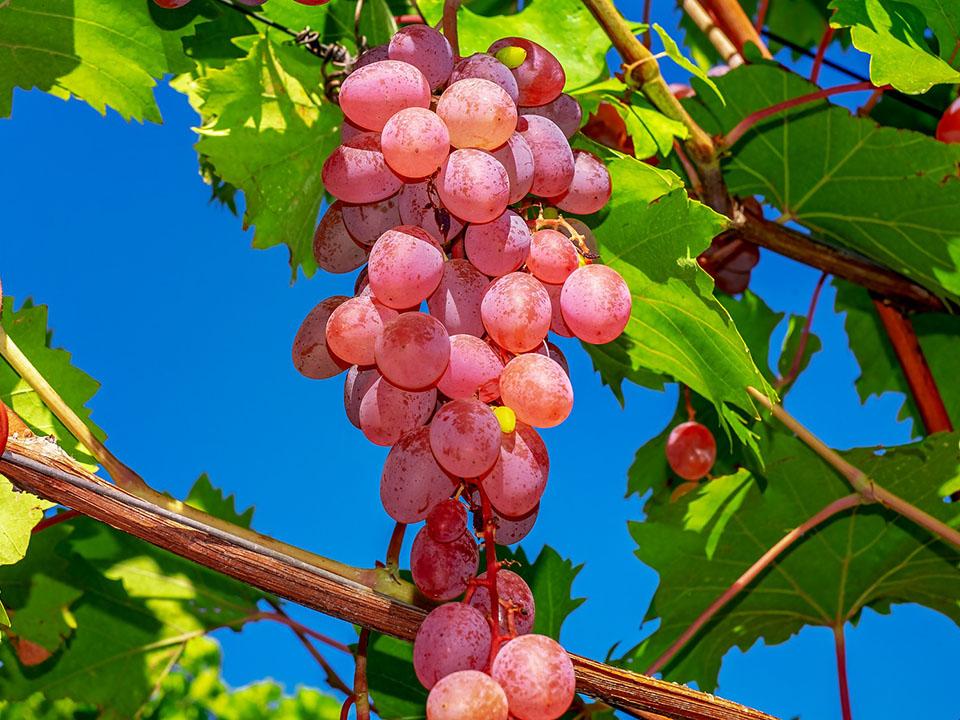
Grapes
You are right! You don’t need a vineyard to grow your own yummy grapes. They are not really as demanding to grow as they seem. It only takes a little attention to watering, training, fertilizing, and pruning. It is achievable to produce a stable crop year after year.
Greenhouse vines need to be planted at the opposite edge to the door. Then the stems trained on the side of the greenhouse alongside the ridge of the roof and moving close to the door. For bigger greenhouses, you can start it with the root outside, or inside. Water them every 7 to 10 days throughout the growing period.
Greenhouse grapes may need a little help with pollination when the vine develops into flower. Remove these curly tendrils as they appear. They will just get tangled up with the fruits. Leave the vines scrambled rather than adhering to your pruning and training course.
You can even increase your possibilities of getting a good harvest. One vine is enough to grow in a tub for small greenhouses.
Read this to get more details about growing grapes in a greenhouse!
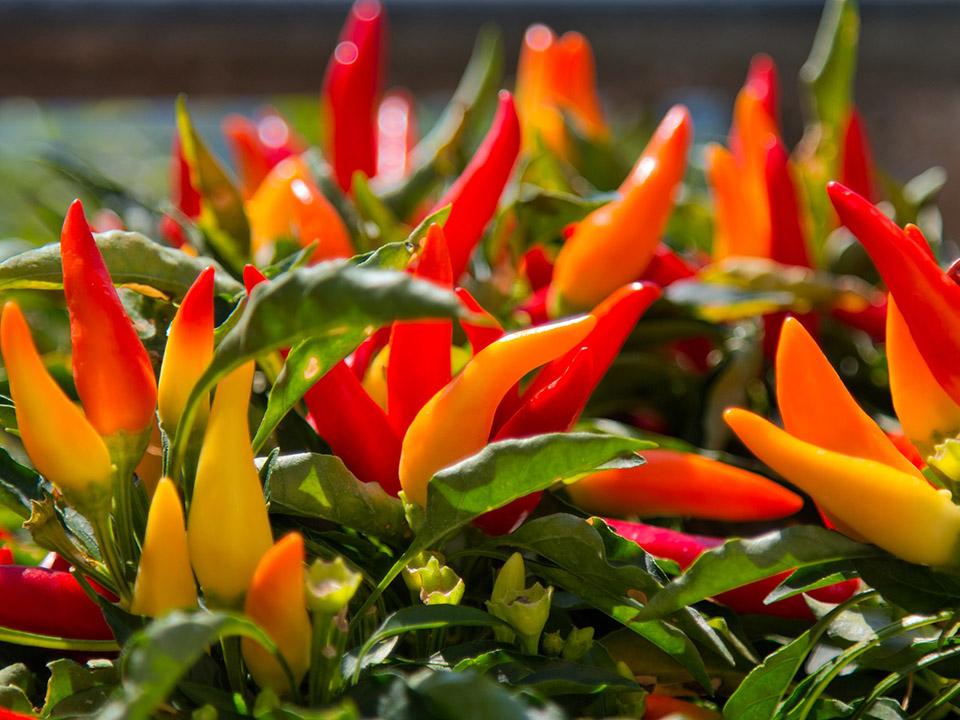
Chilies
Chilies may seem like a veggie but it is surprisingly not. They are clearly a fruit. The secret to an abundant harvest of chilies is a long and hot growing period. This is the reason why they are famously nurtured in a greenhouse.
The germination is normally from a week to 10 days. Pick the main stalk when it reaches about 11 to 15 inches high to promote a lot of side shoots to progress. They love water but make sure not to drown them. There are times that whiteflies may bother them. They are normally caught from another plant like tomatoes. Use yellow sticky cards to manage minor infestations.
Use scissors or a sharpened knife to pick green or red chilies. However, some variations of chilies will not go red in certain environments. You can harvest them green and they will turn red. But they will appear wrinkled and dry out. It is better to leave them on the plant until needed.
Read this to get more details about growing chilies in a greenhouse!
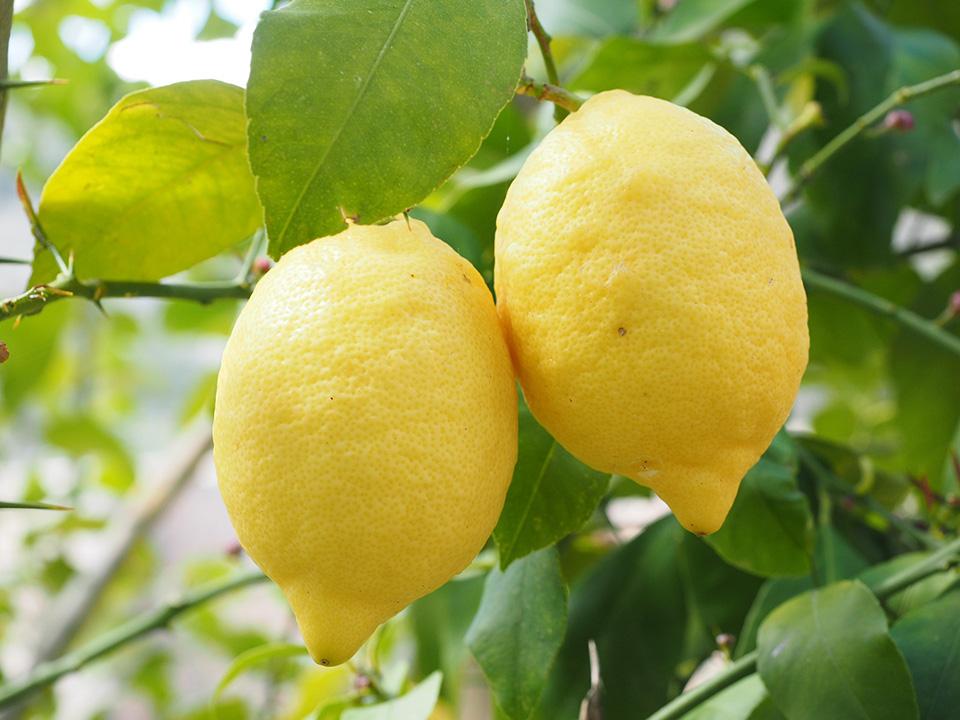
Lemons
Lemons are pretty simple to grow considering they need little attention once planted. It will thrive if the moisture, lighting and temperature conditions have adhered. Think of the dwarf varieties that are well-suited to containers. This allows a lot of gardeners everywhere to appreciate the privileges of homegrown lemon trees.
Lemon trees grow best in an inside a temperature-controlled greenhouse where it stays between 70°F to 90°F. Lemon trees need at least eight hours a day of sun to grow. But if you can provide 12, that will be best! They absolutely require intense daylight to induce flowers and have the energy to bear fruits.
Conduct a taste-test to decide if the fruit is sweet enough because skin color doesn’t mean ripeness. Lemons may be picked over several months. The conventional storage advice is to leave them on the tree until you are willing to consume it.
Read this to get more details about growing lemons in a greenhouse!
Easy to grow greenhouse herbs & spices
Medicinal and culinary herbs can now be within your reach on a daily basis. These recommended easy to grow herbs are guaranteed to jumpstart your gardening hobby.
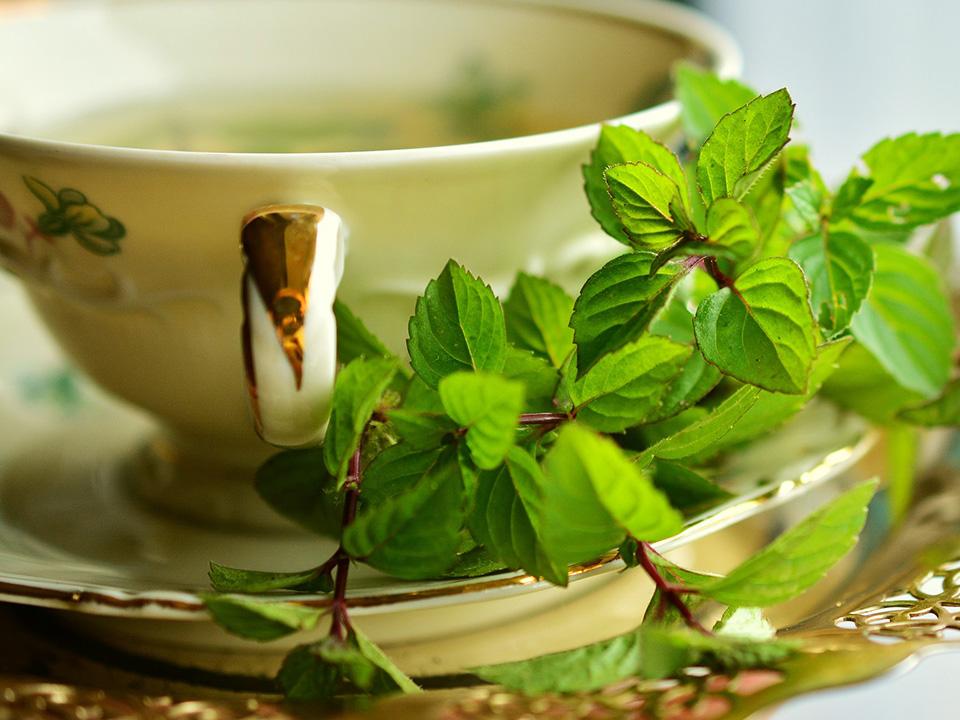
Mint
The lively and invasive characteristics of mint make it relatively easy to grow. Mint carries out lateral root runners beneath the soil. It will also appear in other parts of your area. They compete with other plants for water, light, and nutrients at the same time.
Plant mint for about 2 inches under and 12 inches apart. Water it well. Measure the roots’ tendency to reach nearby plant roots by settling boards. You can put bricks one foot deep throughout beds. You may also place it a big deep plastic canister sunken into your garden bed. You can also simply use a pot or container and place it above the ground or on a shelf.
If you notice some signs of mint rust then eliminate and destroy it. They can quickly spread to other plants and soil. It will soon affect new crops in the future.
You can brew mint leaves into tea, or garnish chilled drinks. Spearmint is commonly used to create mint flavoring or jelly. Try sprinkling dried or raw leaves over plain lamb before cooking. Savor that distinctive taste!
Read this to get more details about growing mint in a greenhouse!
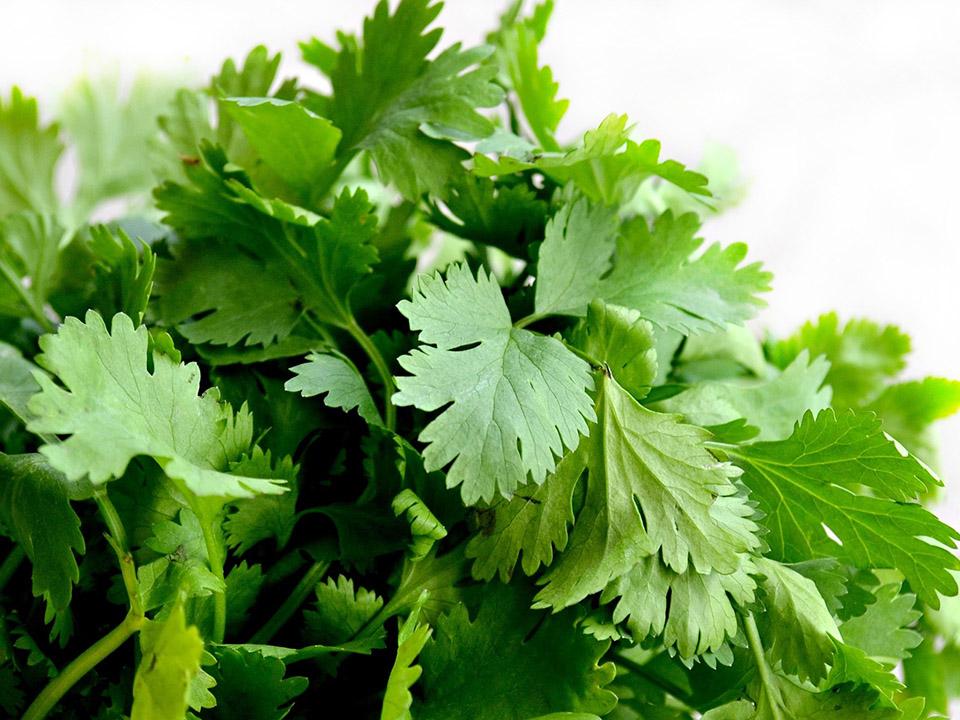
Cilantro
Cilantro thrives in pots and well-prepared gardens with loose, well-draining soil. This herb can reach up to 3 feet in height. They are easy to grow and will self-seed.
This herb needs consistent watering. They do well in full sun and loose soil improved with organic materials. They will flower and go to seed soon in warm conditions. Do not transplant them. The long taproot is so fragile and if injured, the herb will fail to grow. The seeds sprout at temperatures ranging from 50°F to 85°F. It will usually occur in 7 to 10 days.
Discard those dead leaves and pick up debris on the ground. Wash the leaves from time to time to disturb the regular spore-releasing cycle. Neem oil and PM wash applied on a 7-day schedule can stop a fungal invasion. Apply a slow-release organic compost. Never apply unnecessary nitrogen.
Harvest fresh leaves as needed. Cilantro is best harvested early in the morning. Don’t wash the leaves because the fragrant oils will be lost.

Sage
Sage can be grown from seeds easily. We suggest starting this hardy perennial with other herbs, like rosemary, and basil. You can set out greenhouse-grown seedlings approximately one foot apart.
Spider mites and slugs are a few of the typical pests seen on sage. Eliminate weeds and other garden trash. Discard seriously infested plants by placing them in the trash.
Harvest the leaves delicately throughout the first year of growth. Pick as needed in the coming years. Sage is best consumed fresh but can also be stored. Dried leaves have a powerful and somewhat different taste than the fresh one.
Dried sage leaves are a traditional ingredient for turkey stuffing. The seeds are ready to collect when the blossoms become brown and dry. When it is fully dry, lightly crush the heads and carefully extract away the waste.
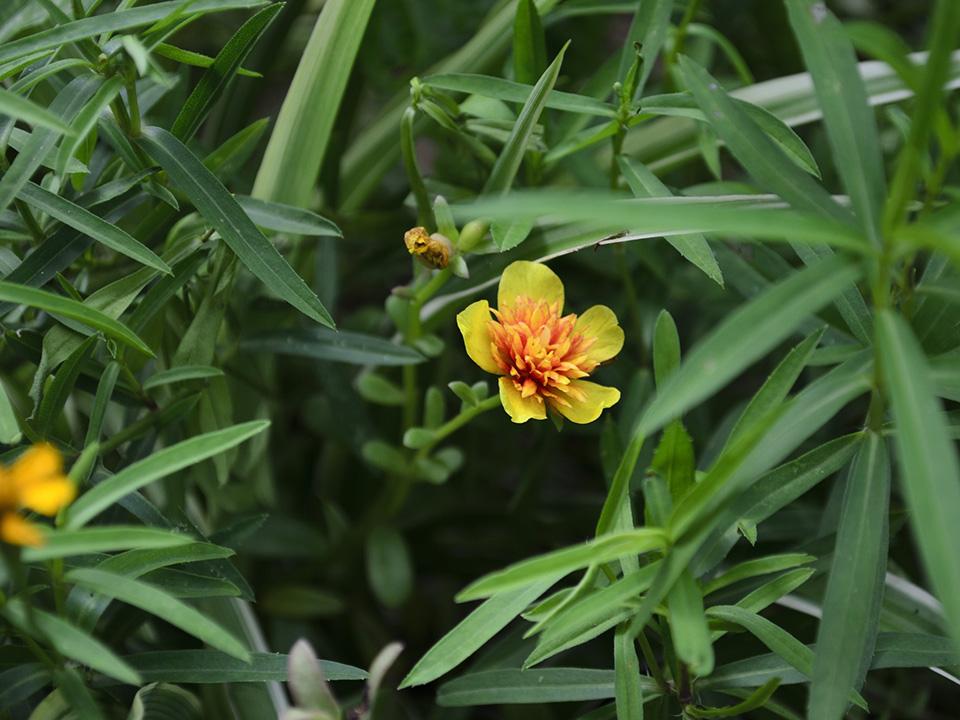
Tarragon
Tarragon is best developed from seedlings, cuttings, and seeds. It is normally easier to plant about 4 to 6 seeds each pot. Apply moistened and composted potting mix. These herbs need to be raised in areas that can get full sun. Ensure adequate airflow.
These hardy herbs can tolerate and even grow in areas having poor, dry, and sandy soil. Tarragon has a strong root system. It makes them quite tolerant of desert conditions. They will survive for 2 to 3 years. However, they will finally run out of steam and need renewing.
There are two varieties of tarragon. First is the French tarragon, which is fully flavored and fancied by foodies. Then the Russian tarragon, which has less flavor.
Set out greenhouse-grown tarragon 18 inches apart. You can cut both the flowers and leaves.
Read this to get more details about growing tarragon in a greenhouse!

Thyme
Thymes are easy to grow from seed. The germination period may take some time (from 14 to 28 days). Seedings are best started indoors where the temperature can be maintained at around 70°F. Therefore, a greenhouse is the perfect place for it.
Sow seeds in superficial rows about one foot apart. When your seedlings are stabilized, thin them to 6 inches apart.
Harvest thyme before their flowers starts to open. Cut the herb with 1.5 to 2 inches from the spot. A second growth will emerge but this must not be cut. This would lessen the plant’s winter hardiness. Although it is a hardy perennial, they still need a little bit of attention over the winter months to withstand the cold environment.
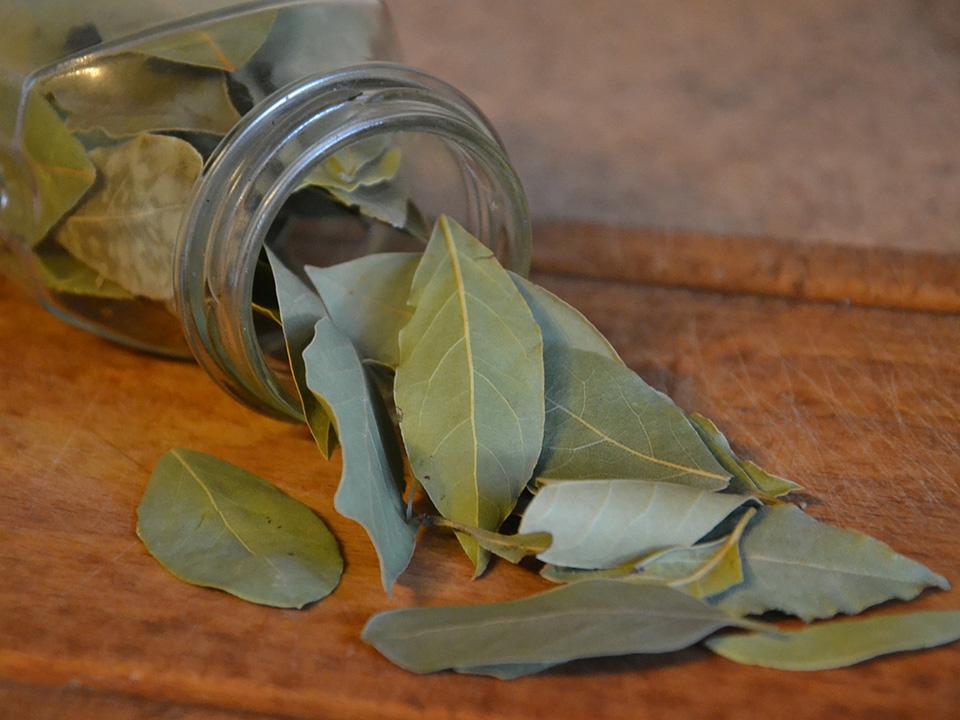
Bay laurel
Bay laurel is an evergreen plant or tree. It is the easiest herb to grow in a greenhouse. It can even survive drought. This tender perennial grows between 3 to 5 feet and even up to 15 feet in tropical climates. Its shiny, durable leaves have many culinary values. Bay laurel is best raised in a container. Random pruning will keep the desired appearance.
Bay laurel leaves can be picked during the season as required. The bigger and older leaves have the strongest flavor. Dry the leaves before saving in sealed packages. This herb can be saved for up to one year. It is a bonus to have at least one bay laurel tree in the corner.
Read this to get more details about growing bay laurel in a greenhouse!
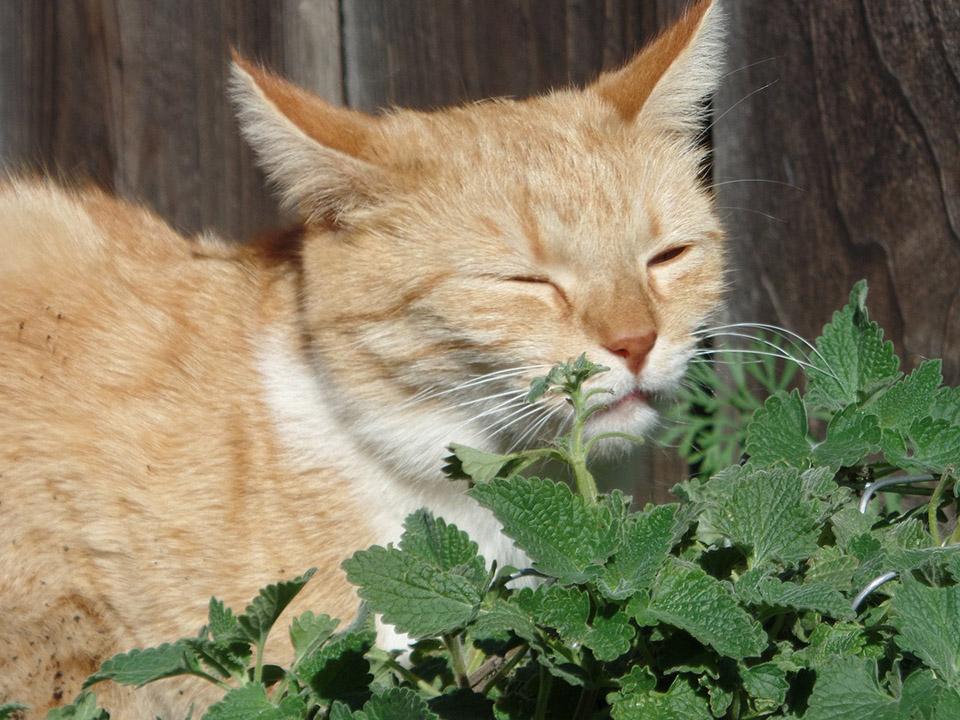
Catnip
Catnip generates quickly from both seeds and leaf-tip cuttings. This perennial herb grows up to 3 feet and it loves full sunlight. It has grey and green leaves with violet blossoms. It easily grows in sunny spots, with enough space, and regular water with excellent drainage. If it goes into flower, cut off the buds to promote stronger and healthier leaf growth.
Be cautious not to excessively mist your plant to control mold growth. Protect them with an arched-shaped wire mesh. This technique will prevent any interested cats in rubbing and licking the herb and will not harm the plant itself.
Catnip attracts helpful insects. You will love it in teas for recreation. Also, try to rub it on your skin. It will act as a natural insect repellant. This is useful to use as a companion plant to repel bugs. Both you and your cat can enjoy the benefits of having catnip grown nearby.
Read this to get more details about growing catnip in a greenhouse!
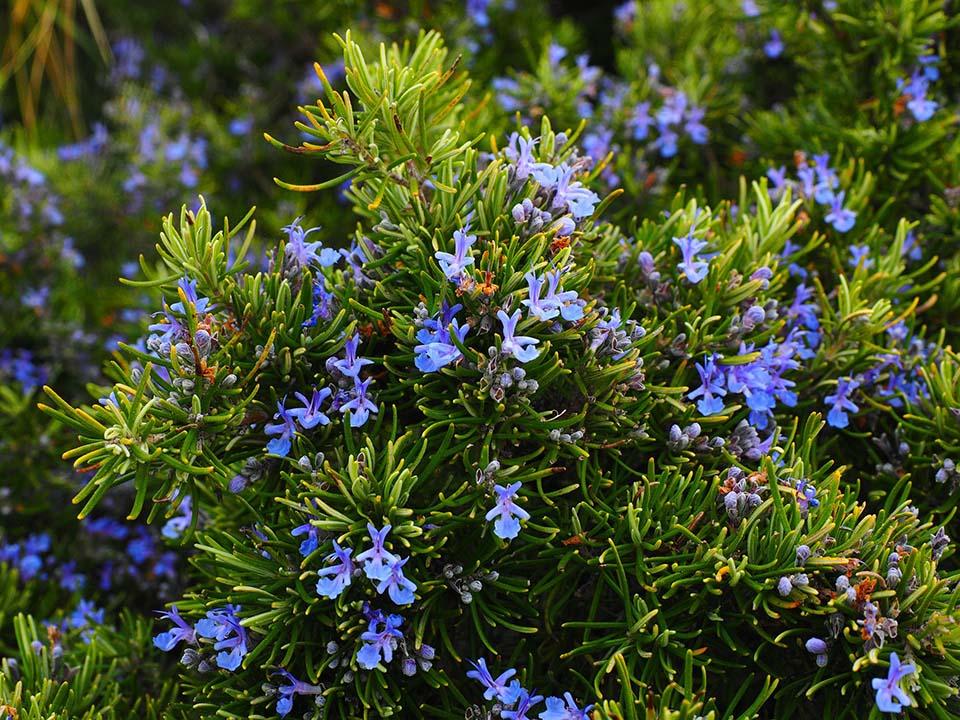
Rosemary
Rosemary is an evergreen woody herb. They grow slowly in their first year or two. It will increase up to 4 feet high with an extent of 6 to 8 feet, depending on your preferred type.
There are two main types of rosemary. The upright and the creeping. Both of them are extremely fragrant. Uprights are completely suited for shaping and as individual plants. The creepers, on the other hand, are good for ground coverings or added slope resistance. Greenhouse coverings can also help you deal with annoying weeds.
It can become sensitive to powdery mildew when packed or planted in wet places. Make sure they have lots of sunlight and adequate airflow to restore vitality.
It is a strongly flavored herb used in cooking and as an element in bouquet topping for soups. Its flowers are more delicately seasoned than its leaves. You will definitely love it on your salads.
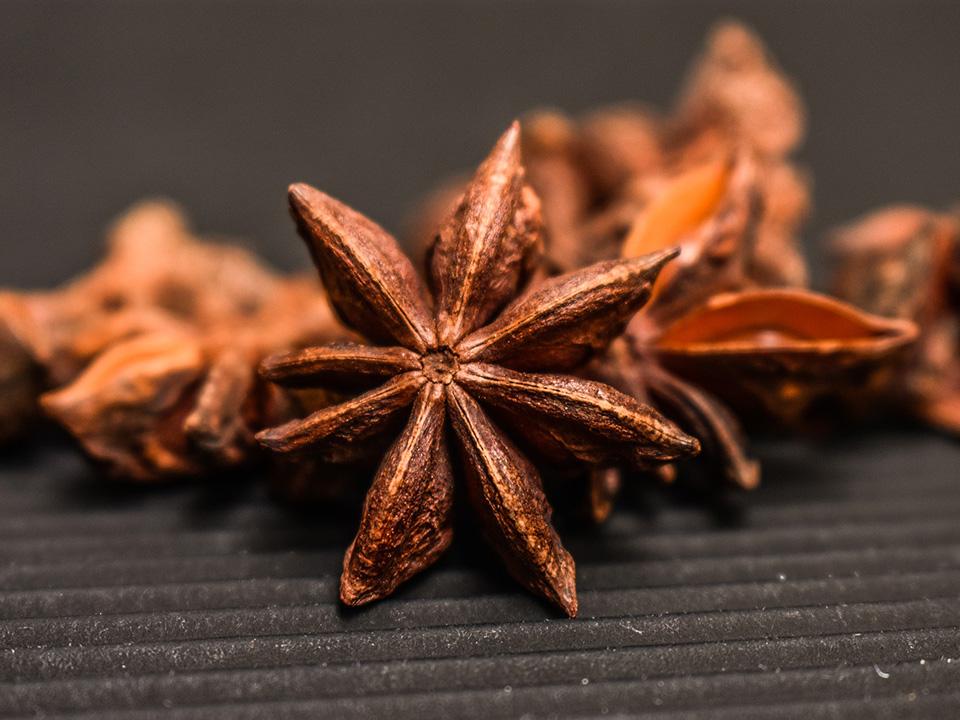
Anise
Anise is so easy to plant. It prefers full daylight and well-drained soil. You can instantly sow seeds or cuttings in your greenhouse.
Anise is a little annual herb with white or faint yellow blossoms. Its scent is comparable to fennel, caraway, dill or licorice. It is native to the Mediterranean and Southern Europe. You can also see them growing wild in open lands.
This plant has lacy leaves and peaks of white blossoms. It gives way to seeds bearing savory oils that taste so great! When blossoming, it presents an abundance of flowers. An anise plant grows between 18 to 24 inches tall.
Star anise thrives in places where the temperature doesn’t drop under 15°F. If you reside in a cooler state below USDA Zone 9, you can plant this herb in a pot. Then you can put it inside a greenhouse in wintertime or grow it inside your greenhouse all year. Harvest the flower peaks after the seeds have grown, and when the flower head has fallen. Read more about growing anise in a greenhouse here!
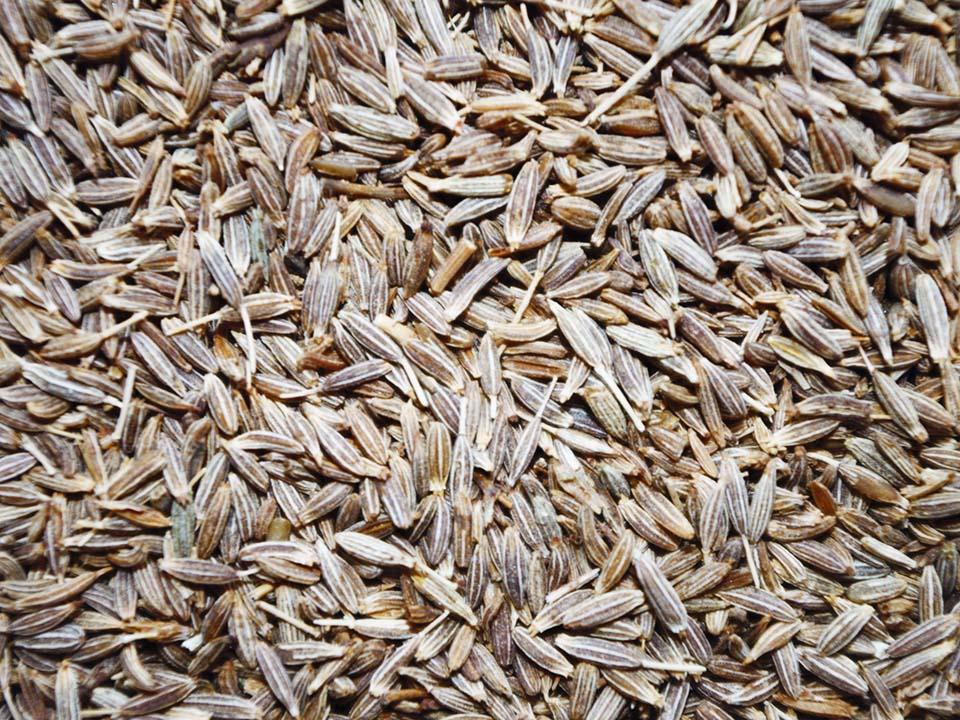
Cumin
Cumin is the second most famous spice in the world! It belongs to the parsley species. It grows high and has slim dark green leaves between 6 to 24 inches high. It is usually grown from seed which you can instantly sow in your greenhouse. Cumin seeds germinate in roughly 7 to 14 days. You can speed up the process by drenching the seeds in water for about 8 hours before sowing. Plant them in containers or raised beds wherever you feel comfortable.
It has a nutty, peppery, sour taste with a rich fragrance and high oil content. Grow the plants in full daylight. It grows fine in normal, well-draining soils. Water regularly. The trick is harvesting the pods when the first ones are roughly spilling the seeds.
Remove the ripen pods and let them turn brown and dry. Next, rub the pods to extract seeds. You can try to take the whole stem and place them upside down in a container in order to get the seeds.
Read this to get more details about growing cumin in a greenhouse!
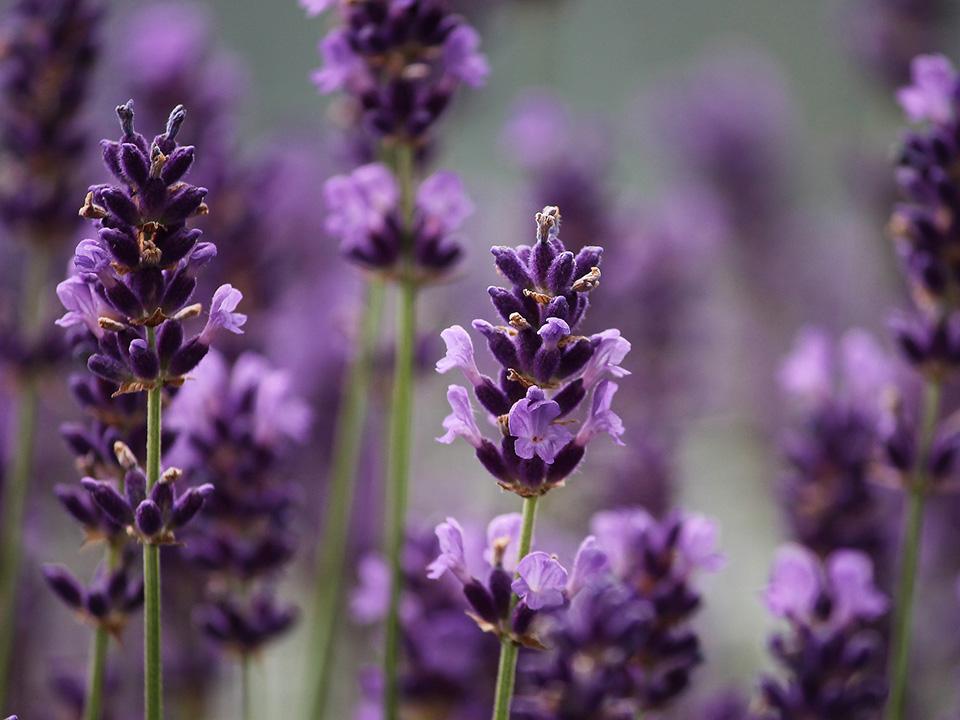
Lavender
Lavender is a strong drought-resistant perennial. It is the most famous of all sweet-smelling herbs. When it blooms, the fragrance drifts pleasingly everywhere. They can become as high as 2 feet. Put the seedlings in a sunny part of the greenhouse. You may also use grow lights because it grows abundantly in full daylight.
Lavender can be forced to flower during the year. You can produce 16-hour days or a 4-hour night break. It will develop in about 8 to 10 weeks if forced in 64°F to 68°F temperatures.
Lavender may be subjected to several pests and diseases. Prevention is the best solution! Supplying good airflow and letting plants to dry somewhat between waterings will help in generating a healthy harvest. They do fine in most soils as long as it is well-drained. Harvest them early in the morning when their oils are at their strongest.
Read this to get more details about growing lavender in a greenhouse!

Licorice
Licorice has been loved even in biblical times ago. It was even discovered in King Tut’s tomb. It is surprisingly a member of the pea species. It grows up to 5 feet tall. This herb has a flavor like Anise but they are not linked.
Licorice is a natural remedy for menstrual cramps and the pain of menopause. It is also used as a treatment for ulcers. Some people use it for breast and prostate cancer therapies. This herb is also said to be beneficial for the adrenal gland. It reduces the impact of aging on our brain. It can be used in teas, flavoring many foods, beer making, and an additive in tobacco.
They grow adequately in slightly alkaline soil. The soil must be deep and moistened. The shrubs can be started from seeds and cuttings. They grow best in the broad sun to partial shade.
Let the fresh shrubs to mature for 3 years before harvesting the roots. When harvesting, get the horizontal roots. Never take the main taproot.
Read this to get more details about growing licorice in a greenhouse!
Easy to grow greenhouse flowers
Grow your flowers in a greenhouse and get a spring feeling even in winter. These easy to grow flowers will surely give you the perfect ambiance. Relax and have fun gardening!
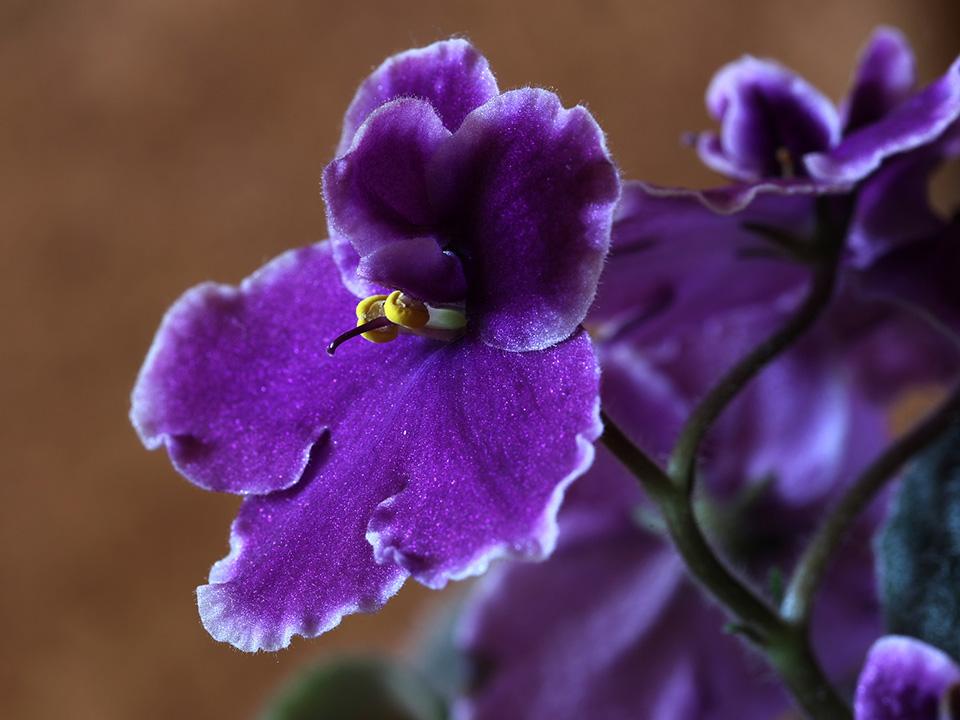
African violets
African violet is so easy to look after and will bloom over and over again even during the long winter months. They are one of the most attractive flowers. This all-time favorite blossoms on several occasions every year.
African violets love the warm environment (not more than 85°F but not less than 65°F). You can keep it flourishing in bright but indirect daylight with moistened soil. They can thrive well underneath artificial lighting if days are too short. Excellent drainage and an African violet fertilizer applied every fortnight can help.
Remember that if the soil is extremely dry or there may not be sufficient light, it may produce less to no flowers at all. Do not use cold water because it will create spots on its leaves. Read more about growing African violets in a greenhouse here!
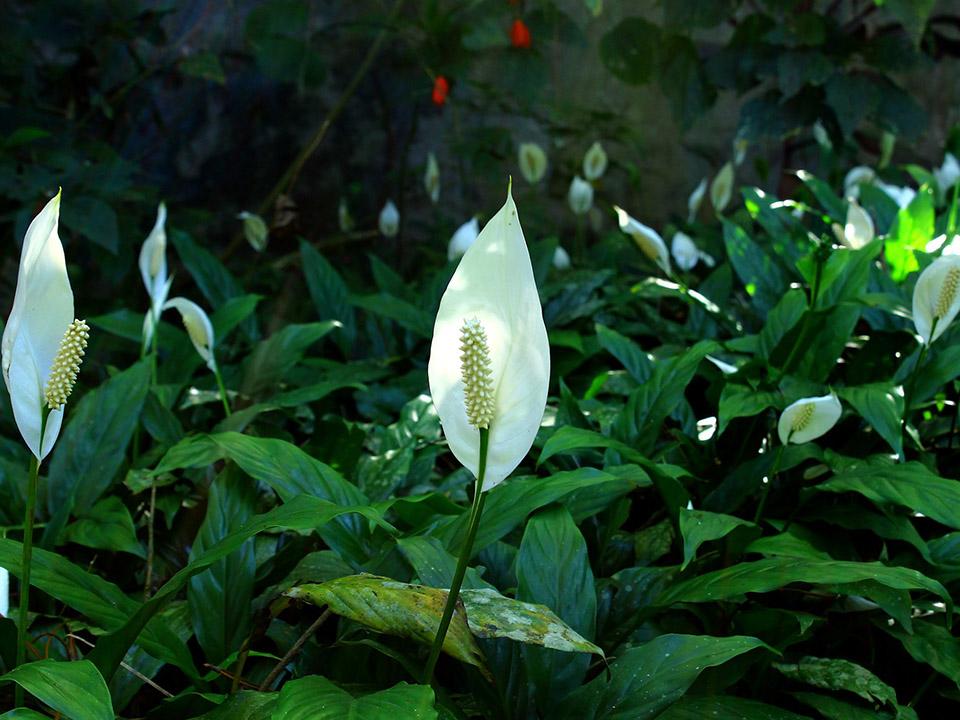
Peace lily
The peace lily is one of the well-known houseplants. They are easy to cultivate and a pretty decoration, too! All you need is to imitate the tropical environment in your greenhouse. Peace lilies may produce white to off-white flowers. This flower will continue to bloom especially with adequate light.
Peace lilies rather tolerate underwatering than overwatering. It is one of those numerous reasons why they usually die. Easily feel the top of the soil to observe if it is already dry. If it is, then you can water your plant. If it is still moist, it doesn’t require watering.
Peace lilies may rise between 1 to 6 feet high. Better check the expected height. These lilies can also purify toxins from the surroundings, according to NASA. The downside is that it may induce stomach and respiratory irritability if consumed or inhaled in large quantities. Remember to keep peace lilies away from small children and pets. Get more details about growing peace lilies in a greenhouse here!

Kalanchoe
Kalanchoe blossfeldiana is one of the most famous potted flowers in a greenhouse. The lush stem-tip cuttings are almost easy to develop. Postharvest production is great. It provides long-lasting flowers which serve as a magnificent decoration for your greenhouse or your house. They are short-day plants. It flowers when the day time is equivalent to or less than 12 hours.
A lot of flowering potted plants are grown in autumn, winter and early spring. This is when the actual light levels are weak.
This water-retaining plant produces bright, bell-shaped flowers. It also needs very little attention. Kalanchoe embraces dry environments and temperature fluctuations. It is also excellent with 45°F wintertime climate.
Read this to get more details about growing kalanchoe in a greenhouse!
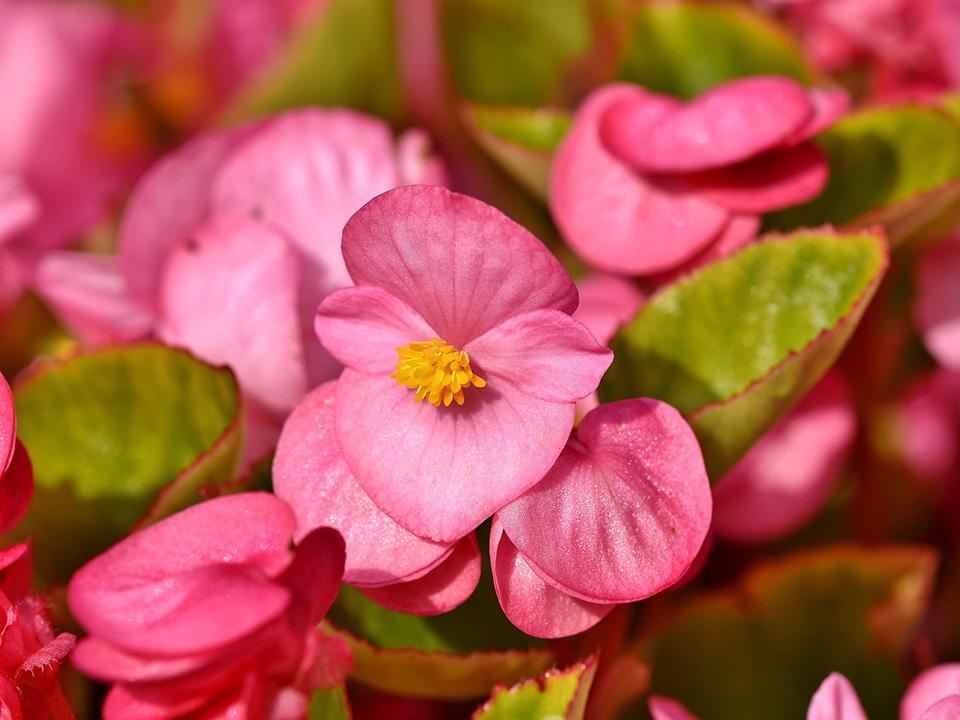
Begonia
Begonias are easy for any gardener to take care of. It doesn’t matter whether they are set indoors or outdoors. They also appear in varying foliage colors and designs. Replant them in beautiful hanging baskets, pots or containers. You can choose from a fibrous or tuberous variety.
These flamboyant blossoms simply need some occasional watering and even less water in wintertime. It is beneficial to water first thing in the morning. This will stop water spotting or burning of the leaves on summer days.
Begonias are also susceptible to powdery mildew. It is best to regulate humidity, improve airflow, and grow with warm temperatures.
Proper heat and light will let begonias to grow full and quickly. These flowers will persevere in even the cloudiest spots in summer.
Read this to get more details about growing begonias in a greenhouse!
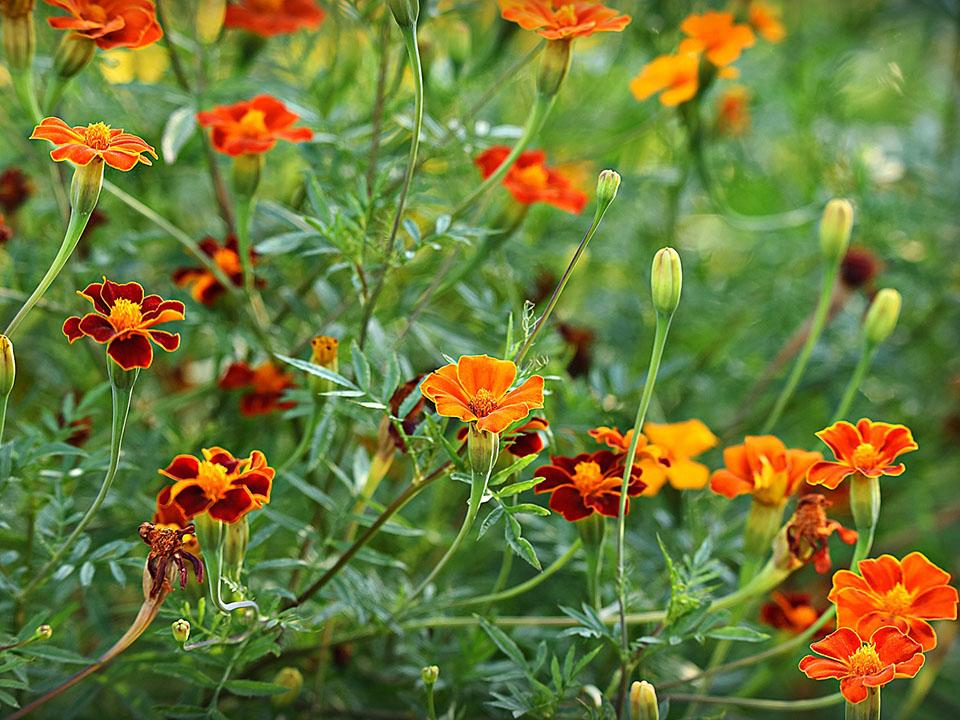
Marigold
These easy to care, brilliant flowers are oftentimes used as Mother’s Day presents. They are displayed individually or in bunches. Marigold flourishes in abundant sunlight. This flower usually endures very hot seasons. They produce satisfying results in reasonably fertile, dry or well-drained ground. Marigold has few pests difficulties. Once they are grown and fixed, try pinching off the tips to boost them to become thicker. Water at the bottom of the plant.
Once flowers are planted, they will only require very little attention. Just water them regularly and don’t let the soil dry out.
Learn more details about growing marigolds in a greenhouse!
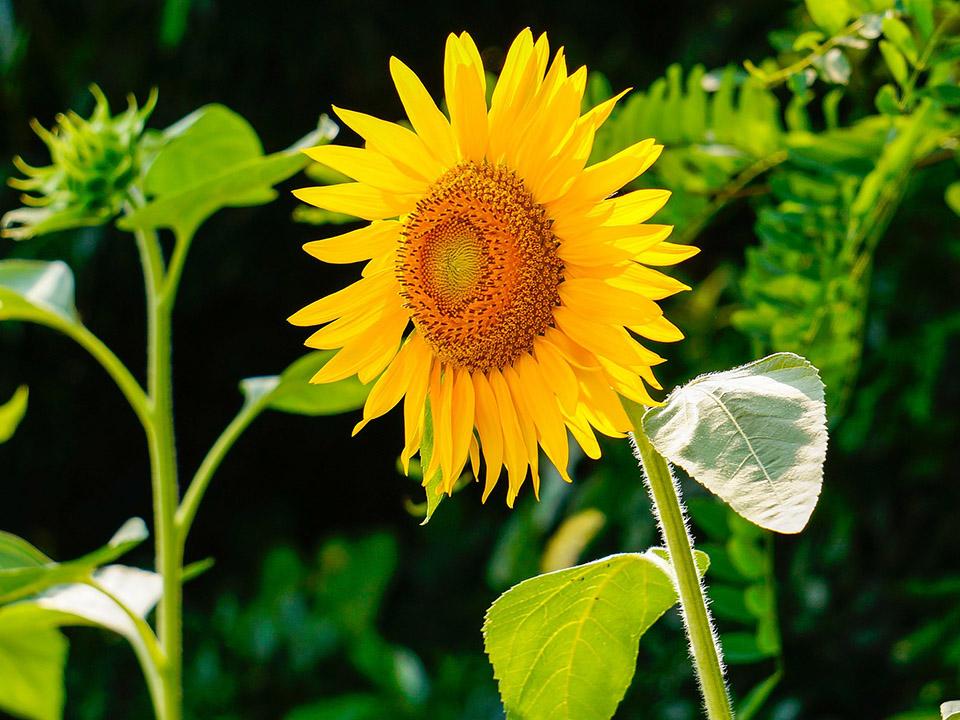
Sunflowers
A favorite to almost everyone. You will unquestionably be fascinated with the sunflowers stretching up to 10 feet high! Simply scatter the seeds right into the soil in a sunny, protected place and watch them blossom.
Sunflower seeds sprout quickly when originated in greenhouses before the start of the growing period. Expose these sun-loving flowers to direct daylight for at least 10 to 13 hours a day. You can also provide artificial light if natural light fails to satisfy them.
Slugs and snails love to eat fresh and developing shoots. Protect them by using a covering defense, like the head of a plastic bottle. As the sunflower takes form and begins to grow higher, you may want to hold the plant straight up. For the best outcome, tie a stick to the stem using strings.
Read this to get more details about growing sunflowers in a greenhouse!
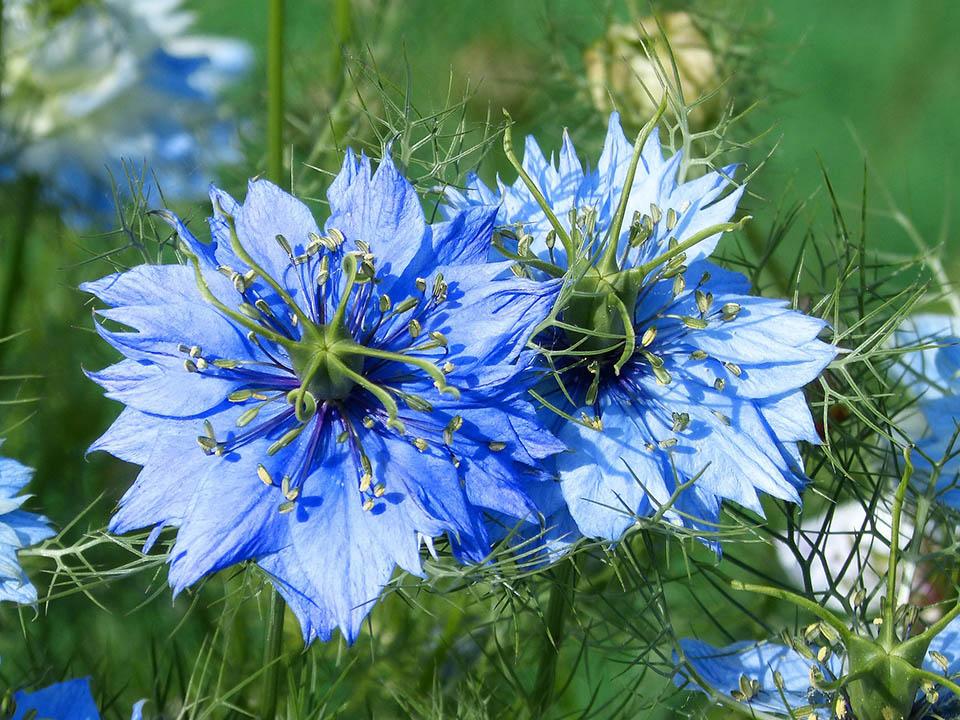
Nigella (love in a mist)
Nigella is an amazingly easy flower to grow. Just spread the seeds over a spot of naked soil, rake it, and let it take care of itself! They look great in planters and hanging baskets.
Their seeds love a sunshiny spot but they are also fine with a shady spot. It self-sows easily but is not annoying. You may choose to think about border edging to restrain them. It doesn’t want being transplanted so it is always best if sown directly.
Amidst jewel-like blossoms and fragile ferny leaves, it is much sturdier than it seems. As the flowers wither, this attractive flower will produce seed for the next year. It is practically pest-free because they do not last long enough to be disturbed by any pests or disease.
Read this to get more details about growing nigella in a greenhouse!
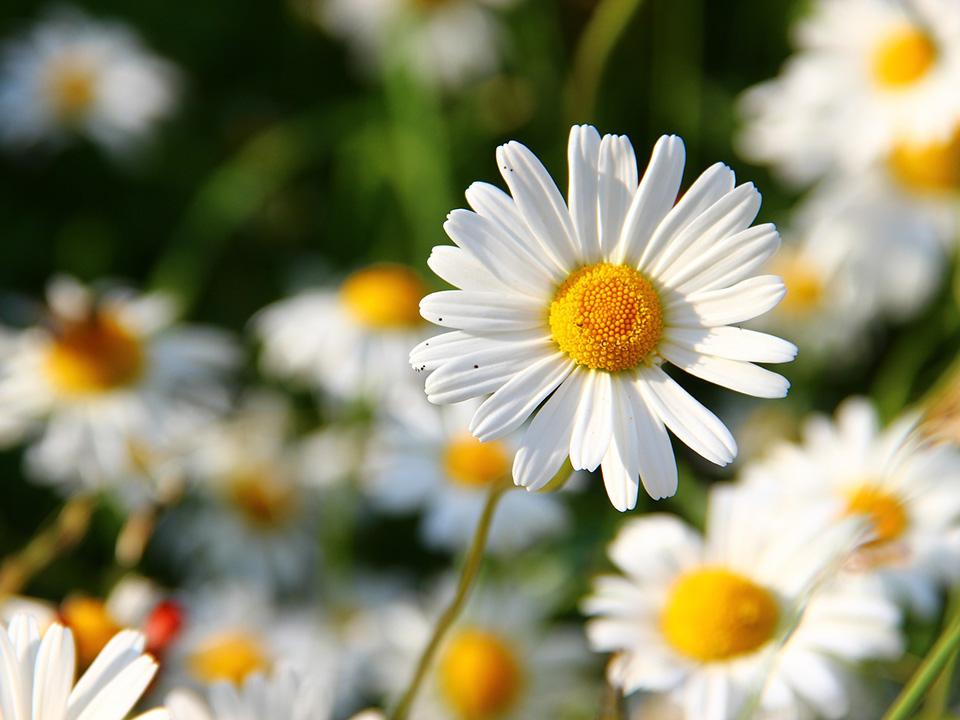
Daisies
Most gardeners enjoy their easy to grow character. They appear to grow in all forms and sizes.
Daisies are usually developed from seeds. Healthy soil is the key to planting most flowers. The soil needs to be fertile and well-draining. Constant trimming and deadheading are what keeps them flowering.
Daisies are rarely disturbed by pests and diseases. They generally do not require insecticides. On some isolated circumstances where pests and diseases are a difficulty, you can treat them with a bar of insecticidal soap at the initial sign of a problem.
Plant in full sun and water completely but never over water. This will make them overly tall and lanky which requires staking. If they are in a shady place, they will reach for the sunlight and fall over.
Read this to get more details about growing daisies in a greenhouse!

Morning glories
Are you looking for a fabulous, quick flowering climber that will overwhelm you with a wealth of blossoms? Why don’t you give morning glories a shot? The large, perfumed flowers unfold to welcome the morning sun, then close up at lunchtime.
If you want to enhance the germination speed, immerse it in warm water for a couple of hours. Make sure you have something for them to go upward to flash their brilliance. Morning glories love the bright sunlight. They will even grow in normal to weak soils. It just a little attention so this is really great for kids and inexperienced gardeners. They are usually not even bothered by pests and diseases.
They are not safe for ingestion because most portions and seeds are toxic. Morning glories are recognized as harmful weeds to some people. It is against the law to plant them in Arizona. Read this to get more details about growing morning glories in a greenhouse!
























